Tom Clancy: The Division 2
Main MISSION: Jefferson Plaza
Jefferson Plaza is a narrative and objective driven mission mixing indoor and outdoor spaces in The Division 2, focused on environmental storytelling and tactical combat pacing. As a junior level and mission designer using Snowdrop, I led the location research, encounter layout, whiteboxing, pacing iterations, and encounter scripting for both solo and four-player modes.
Screens and video
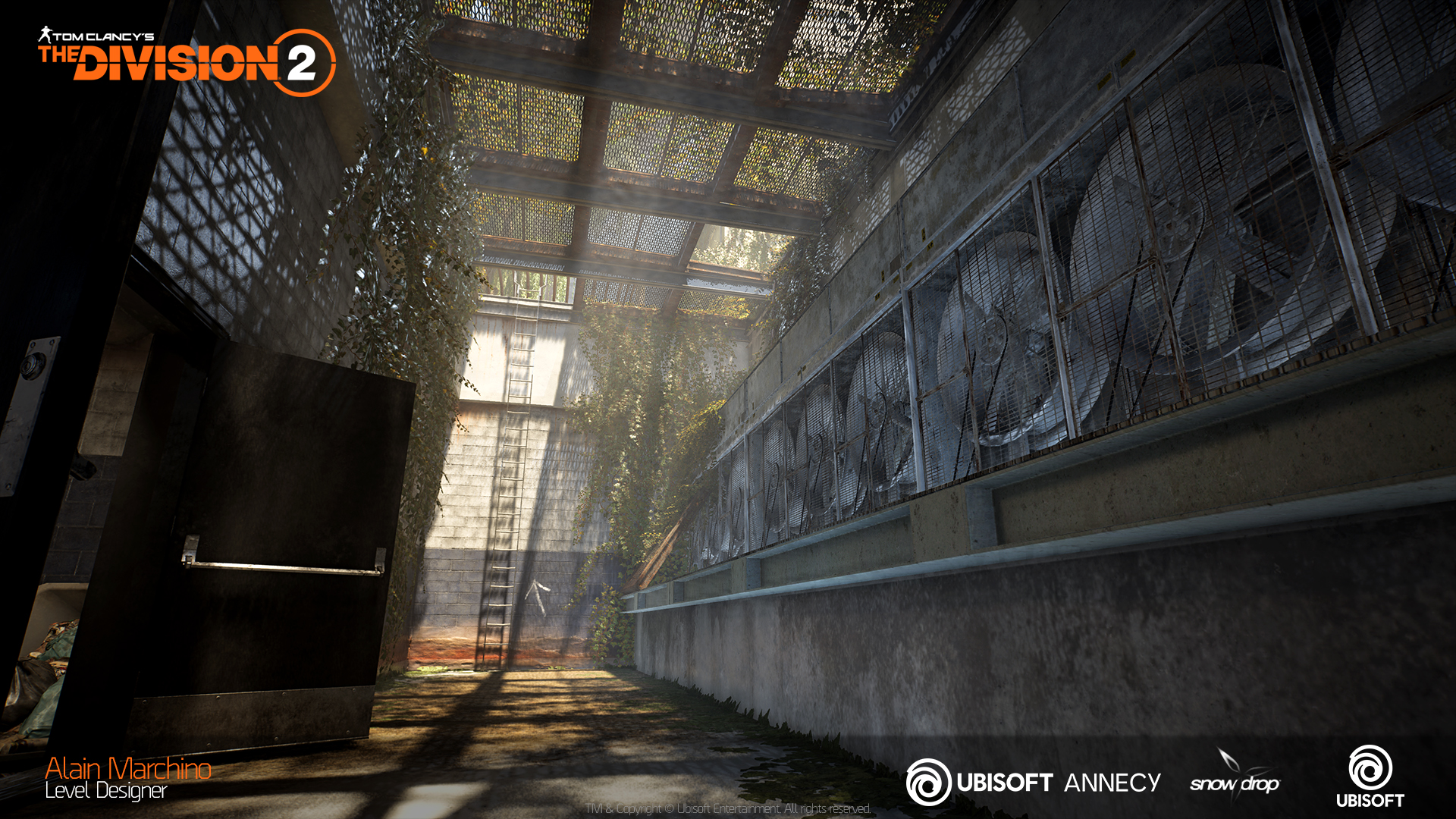
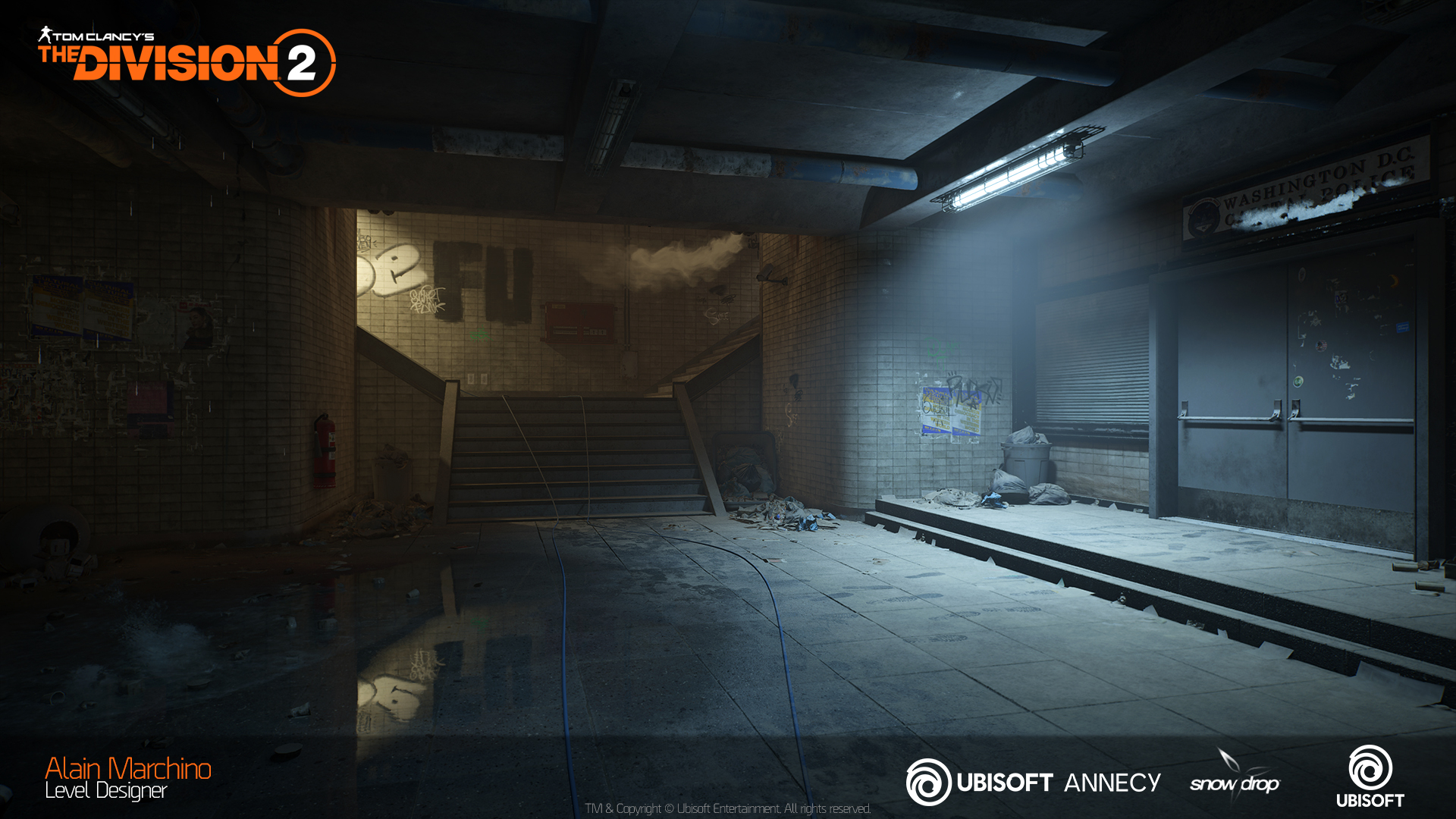

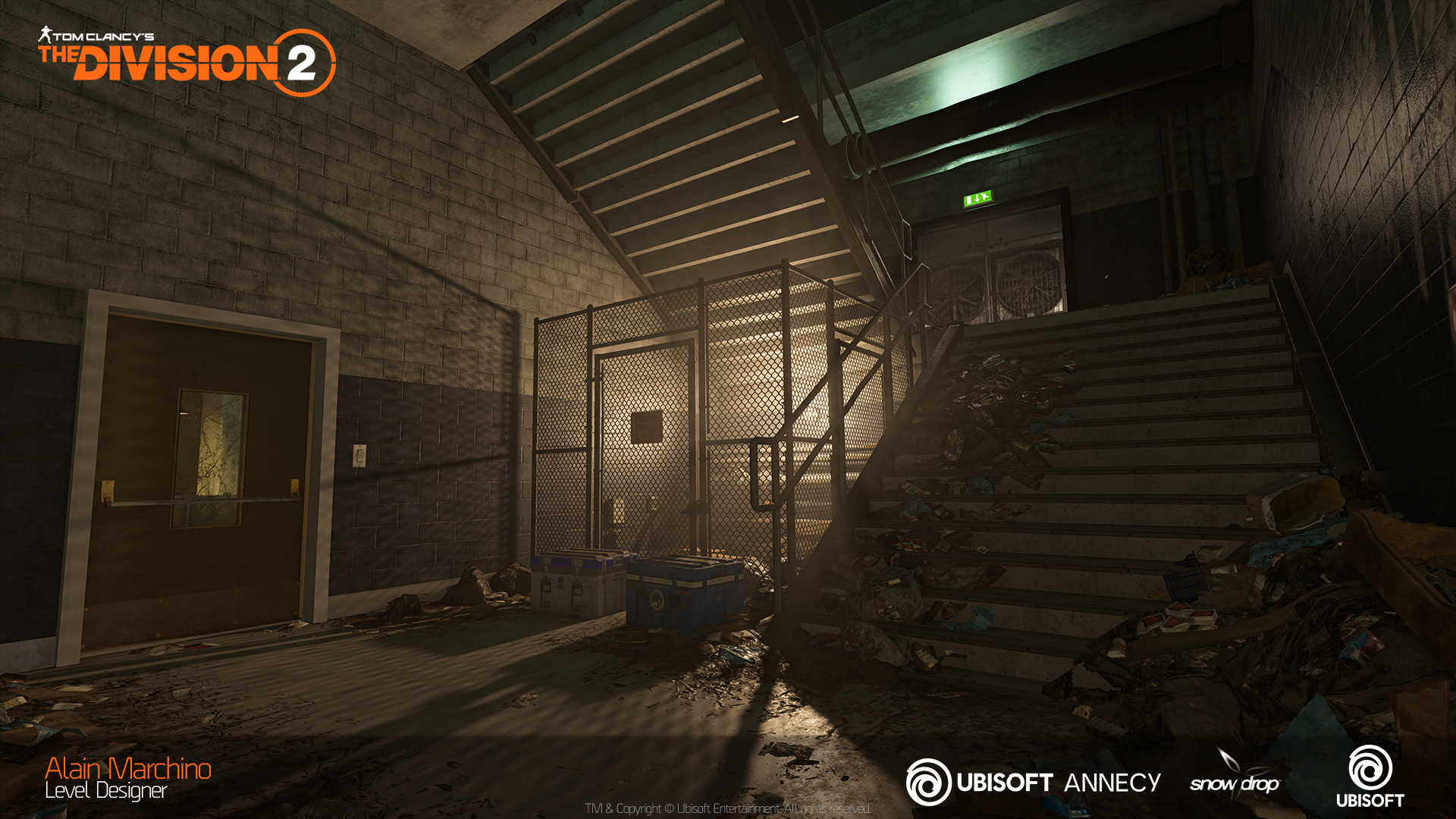
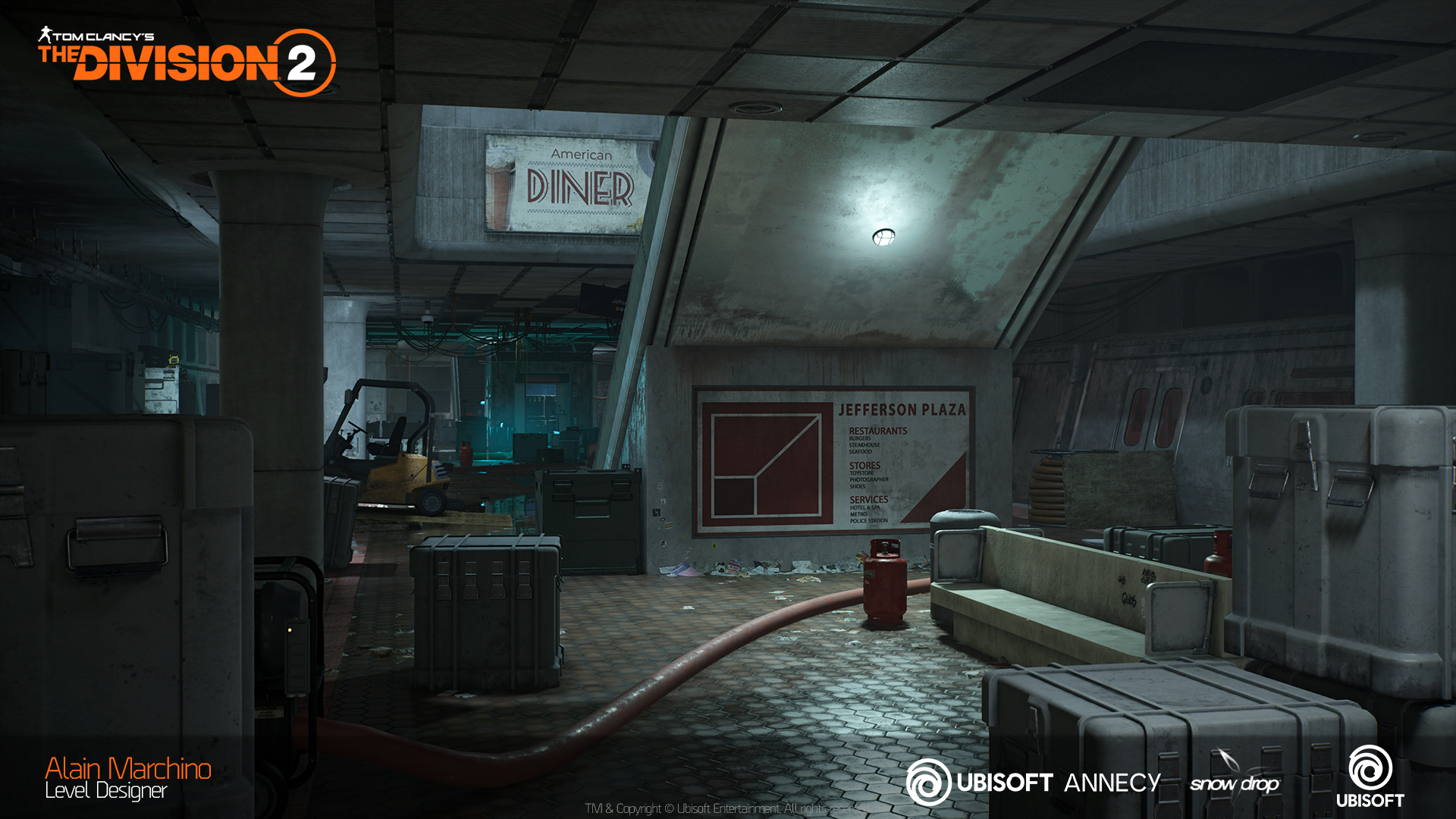
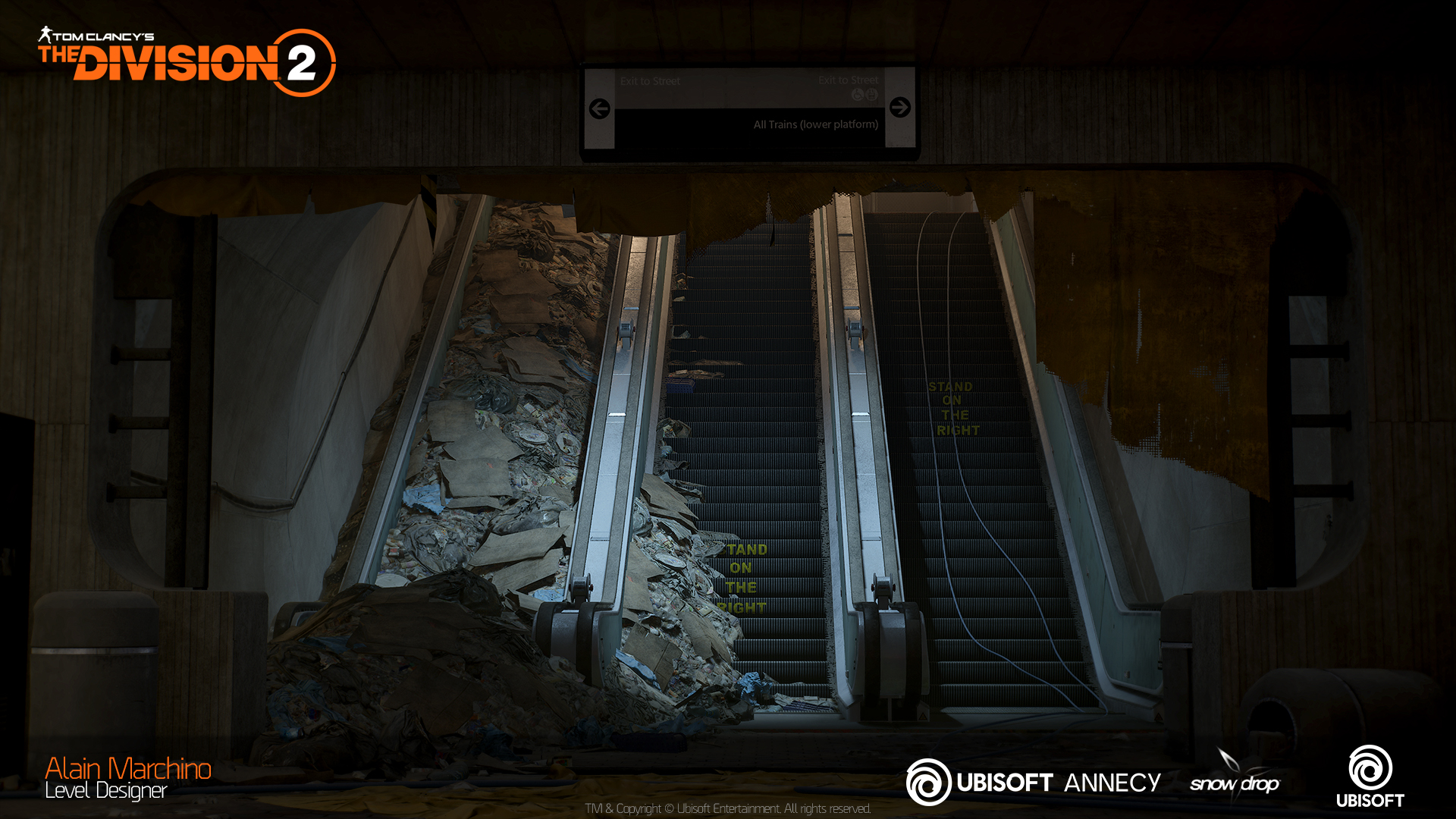
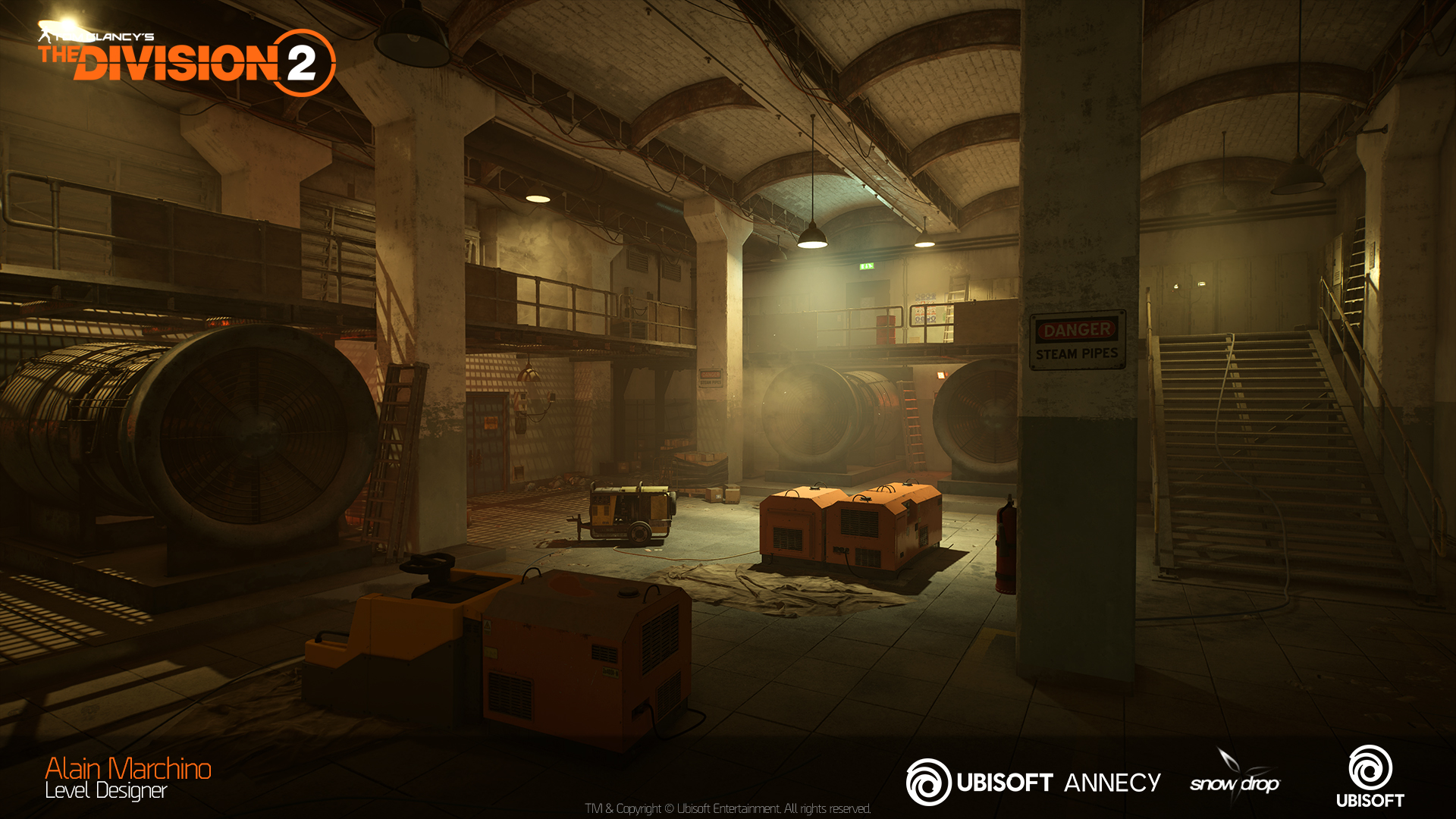

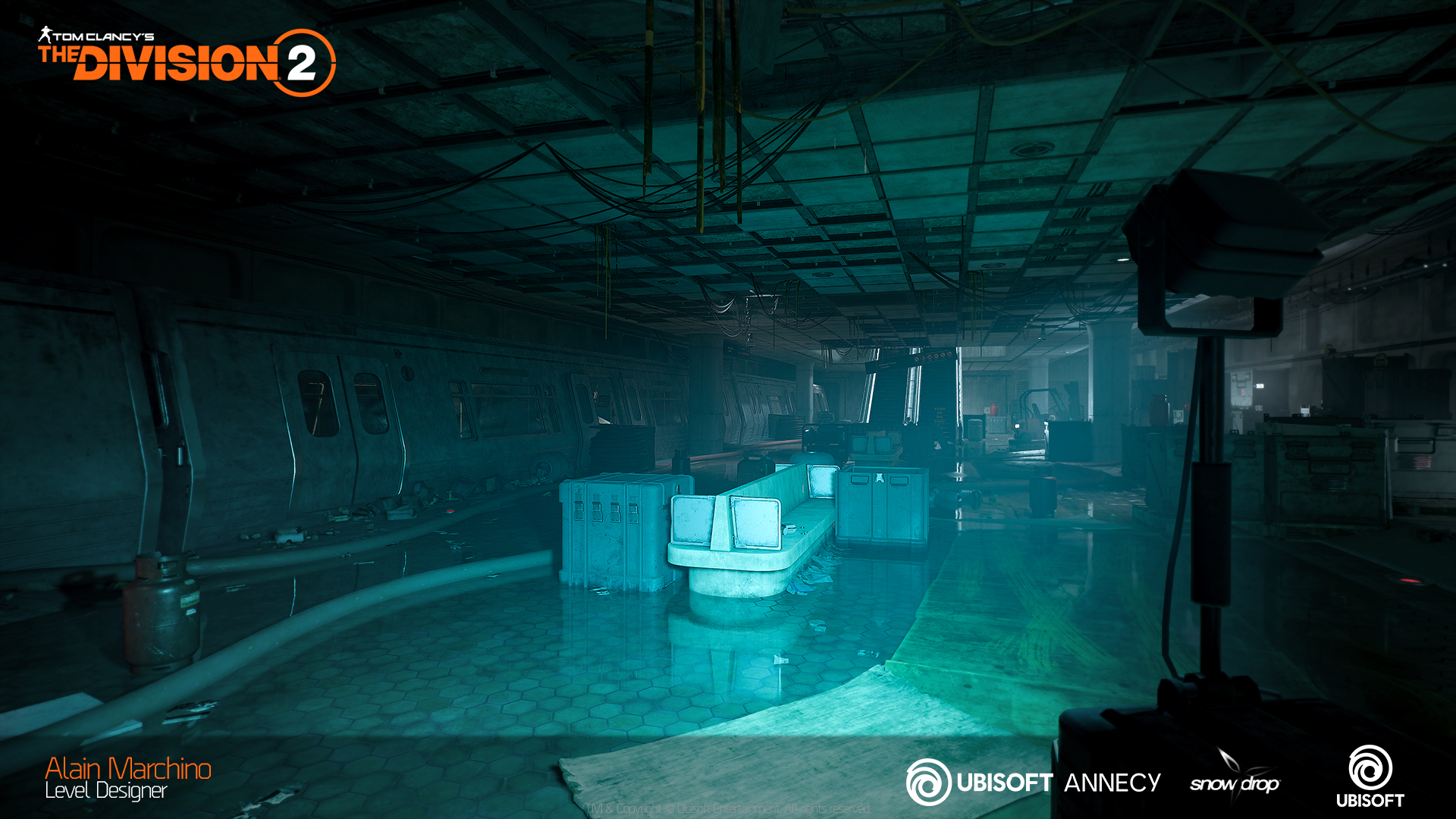

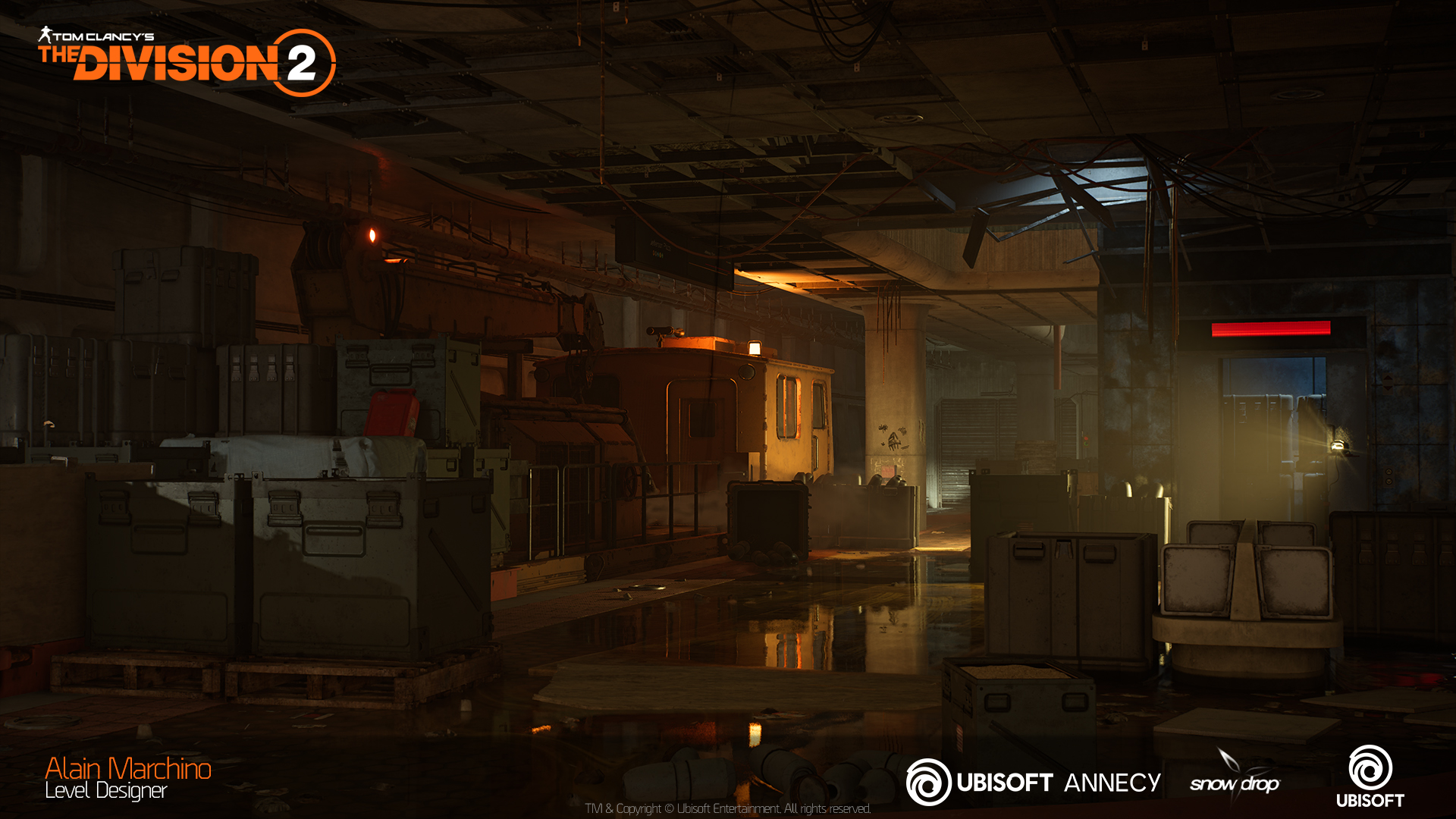
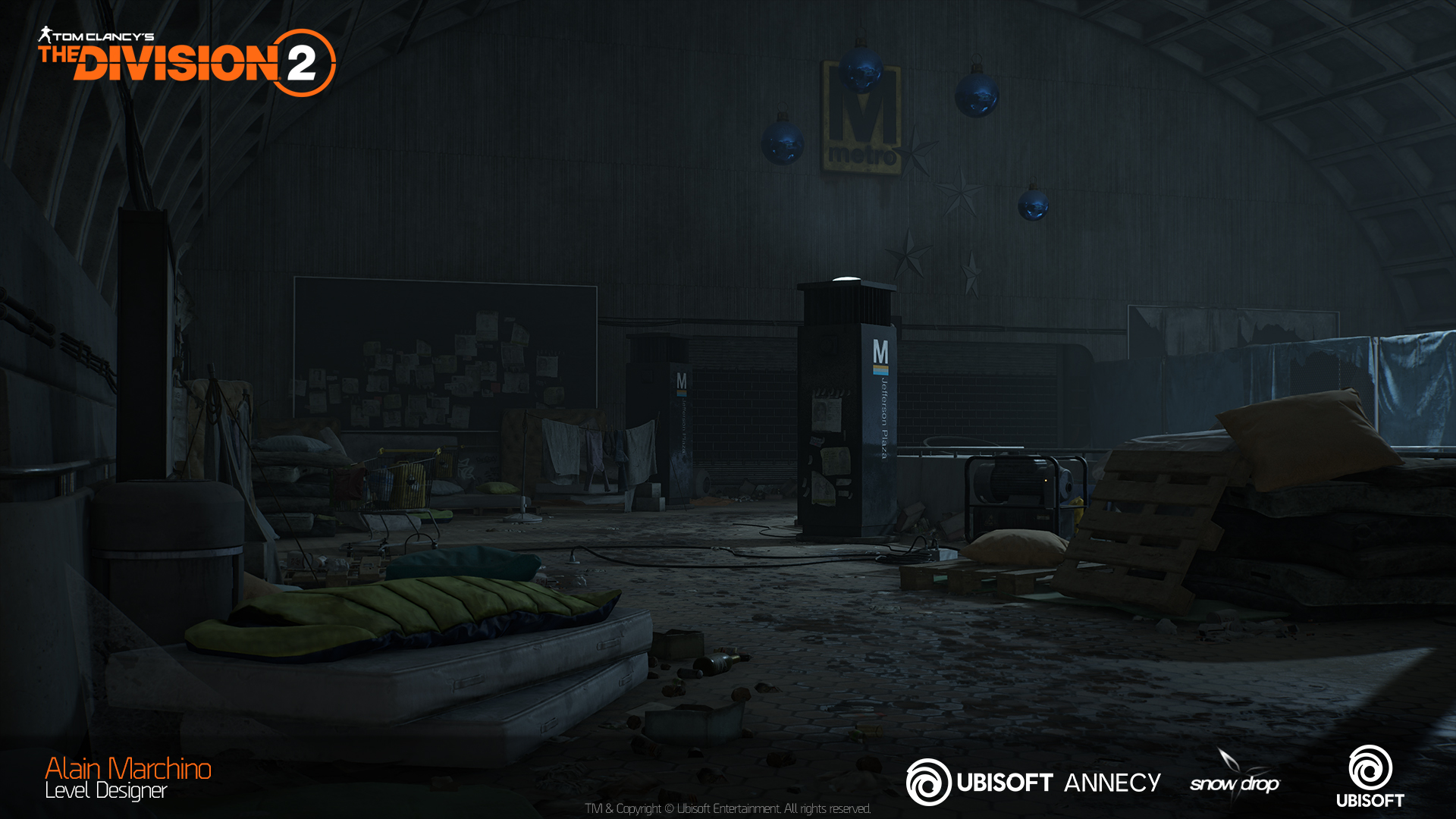
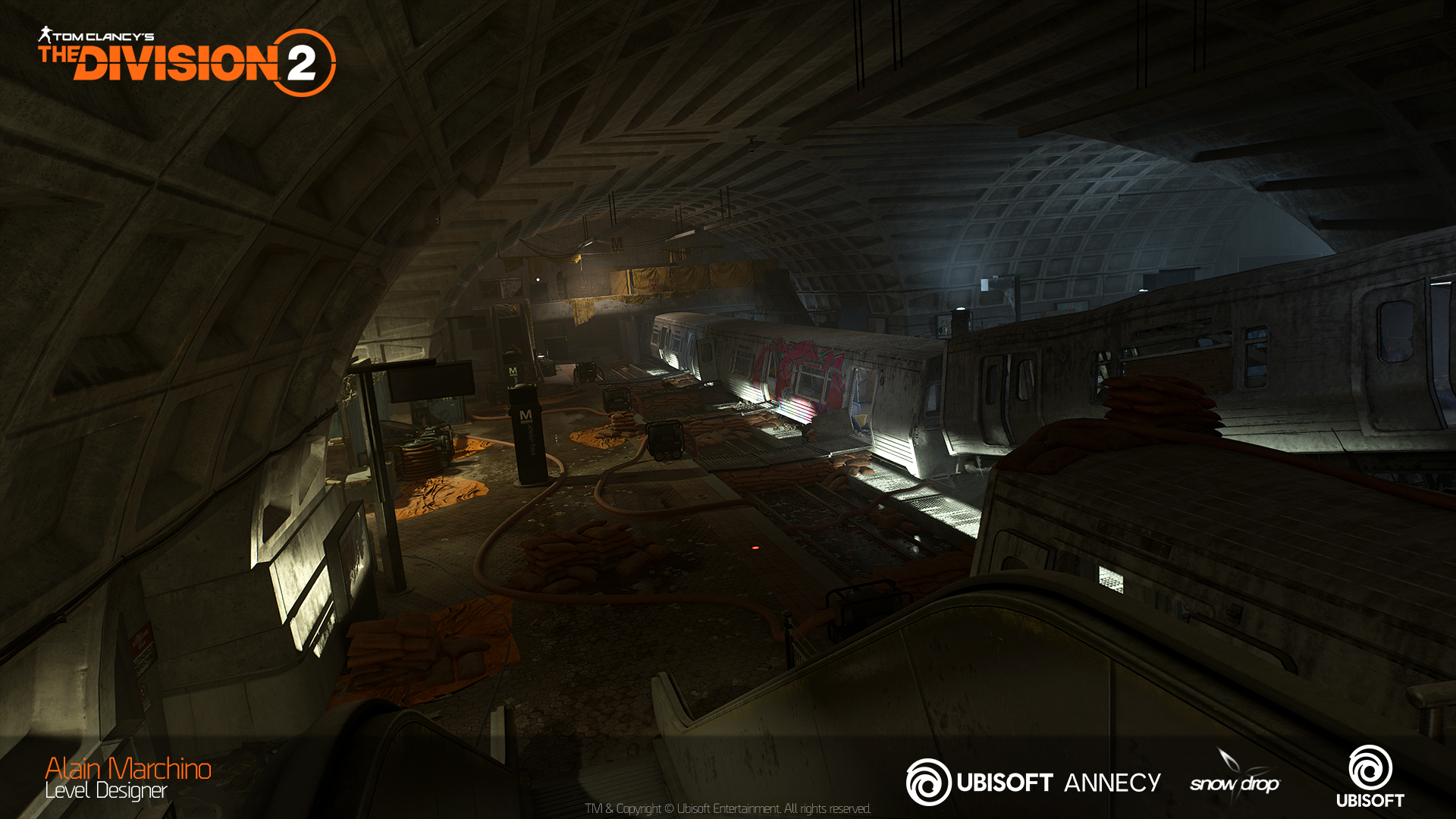
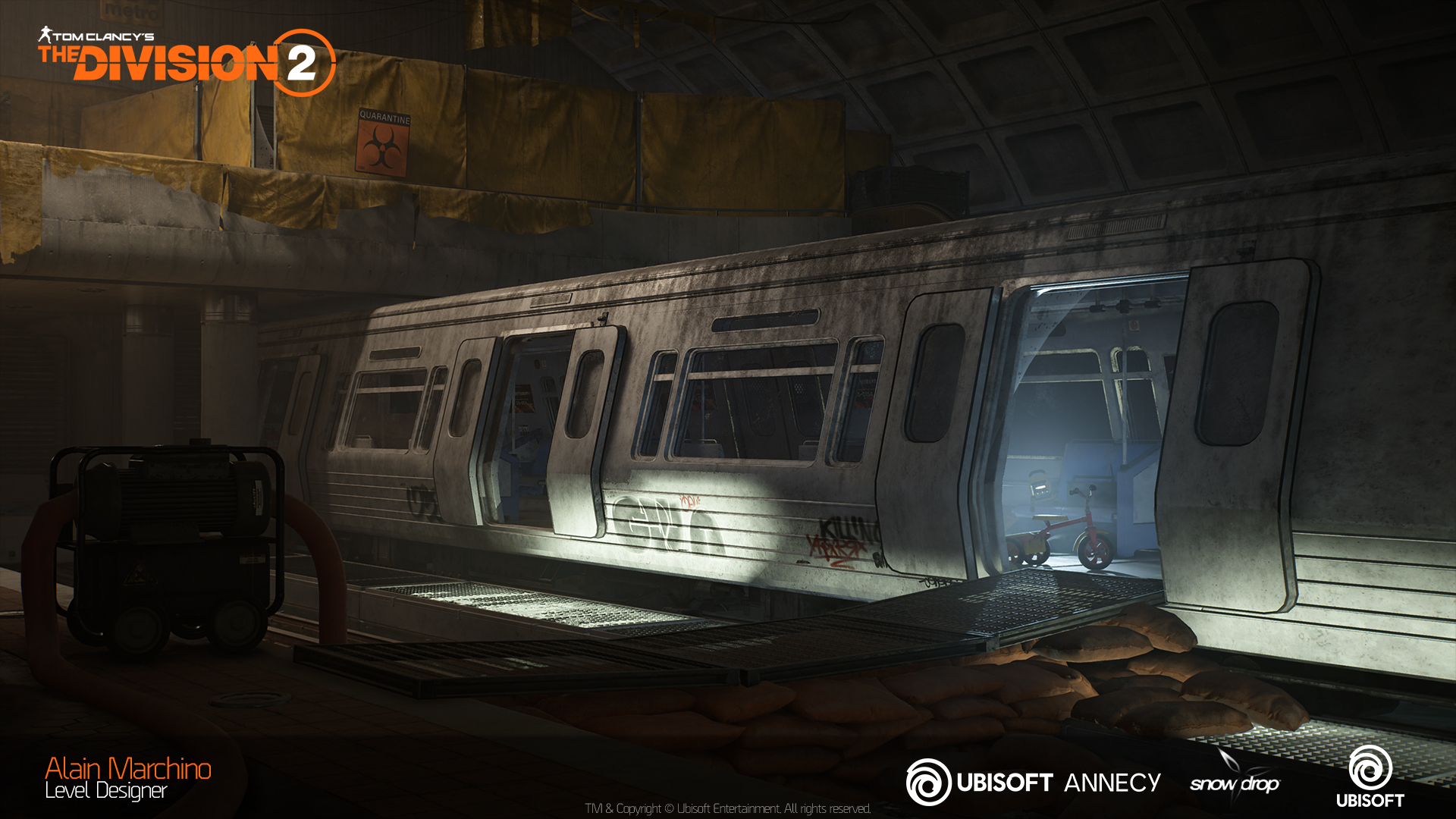
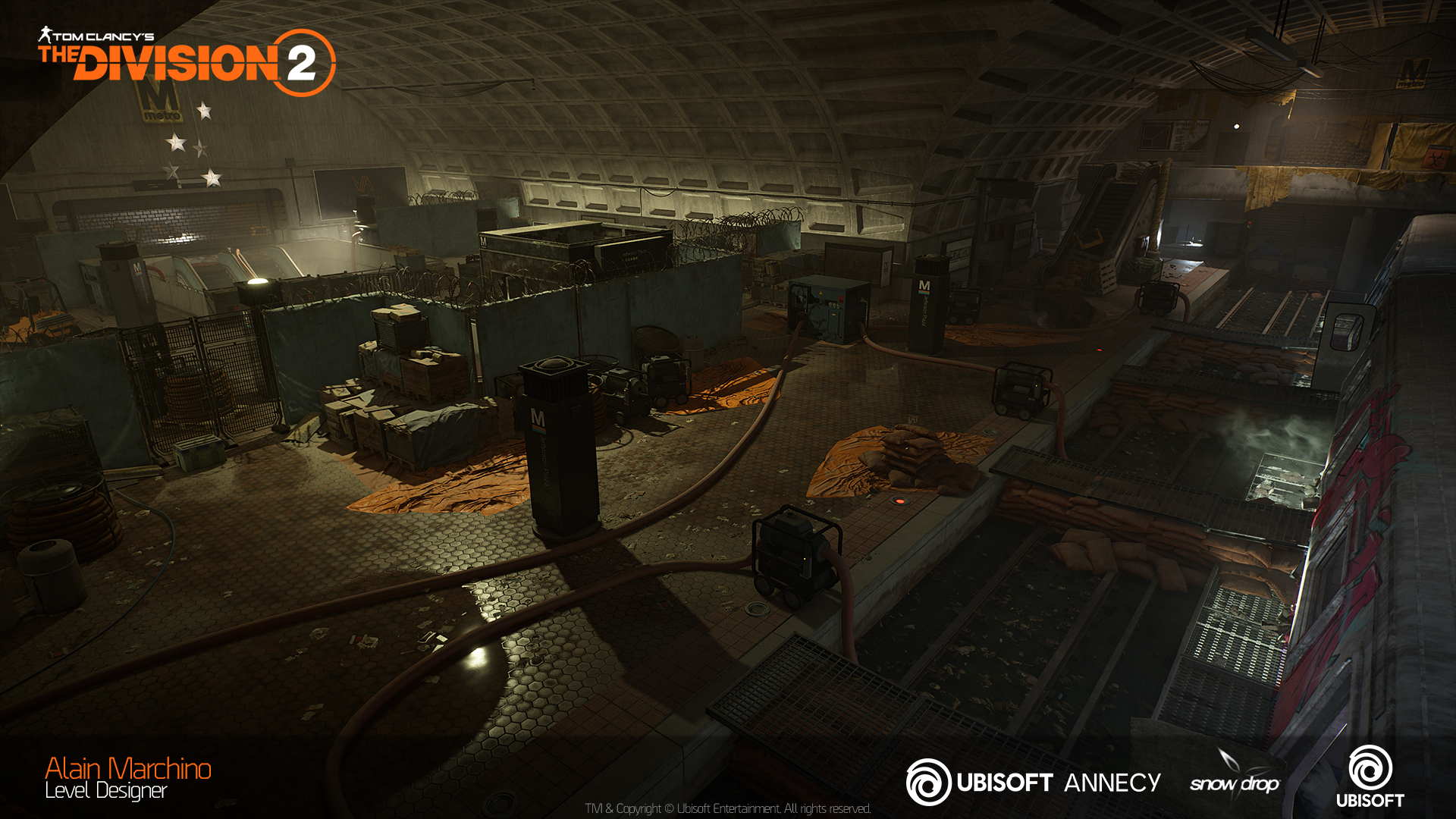
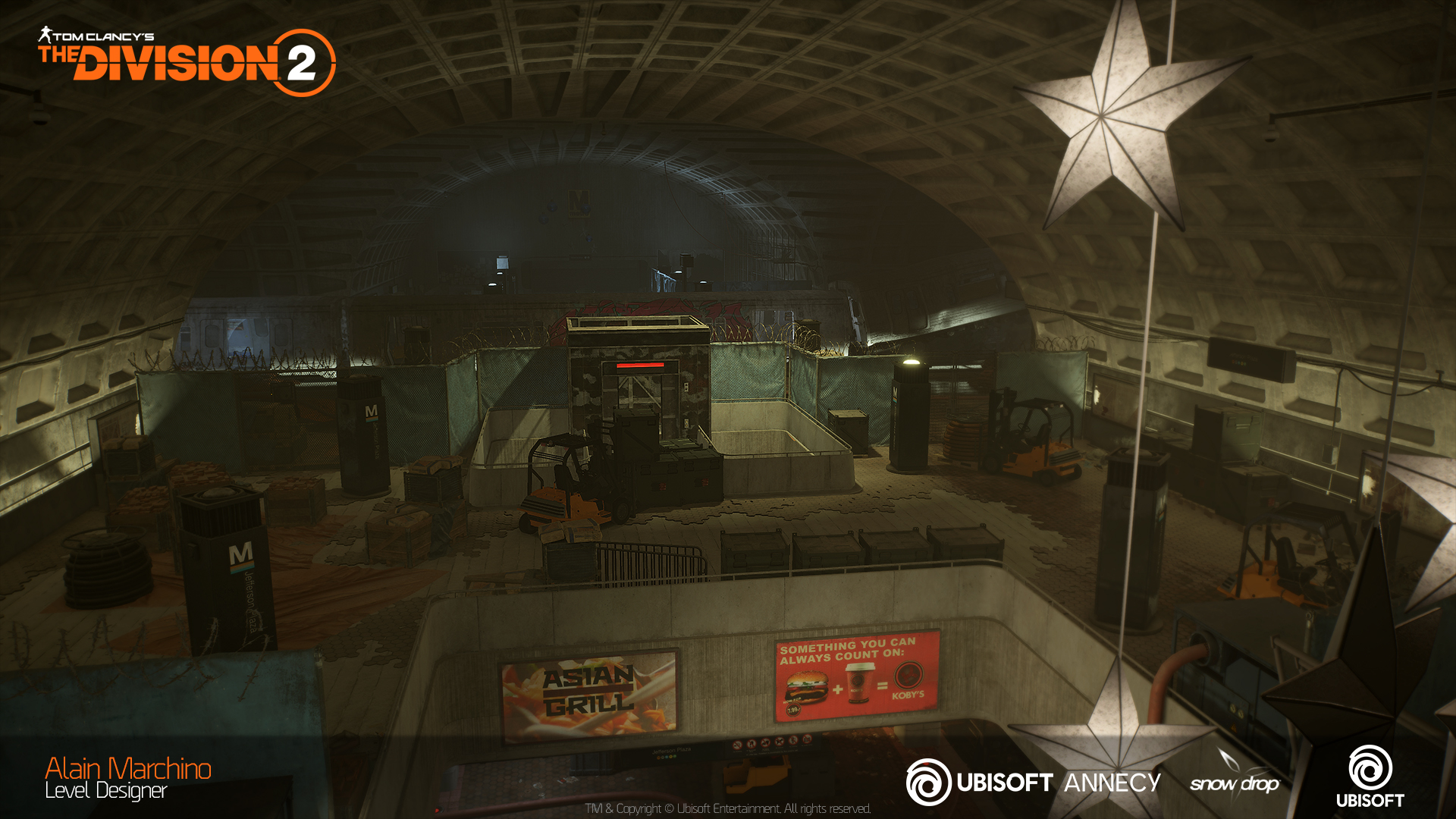
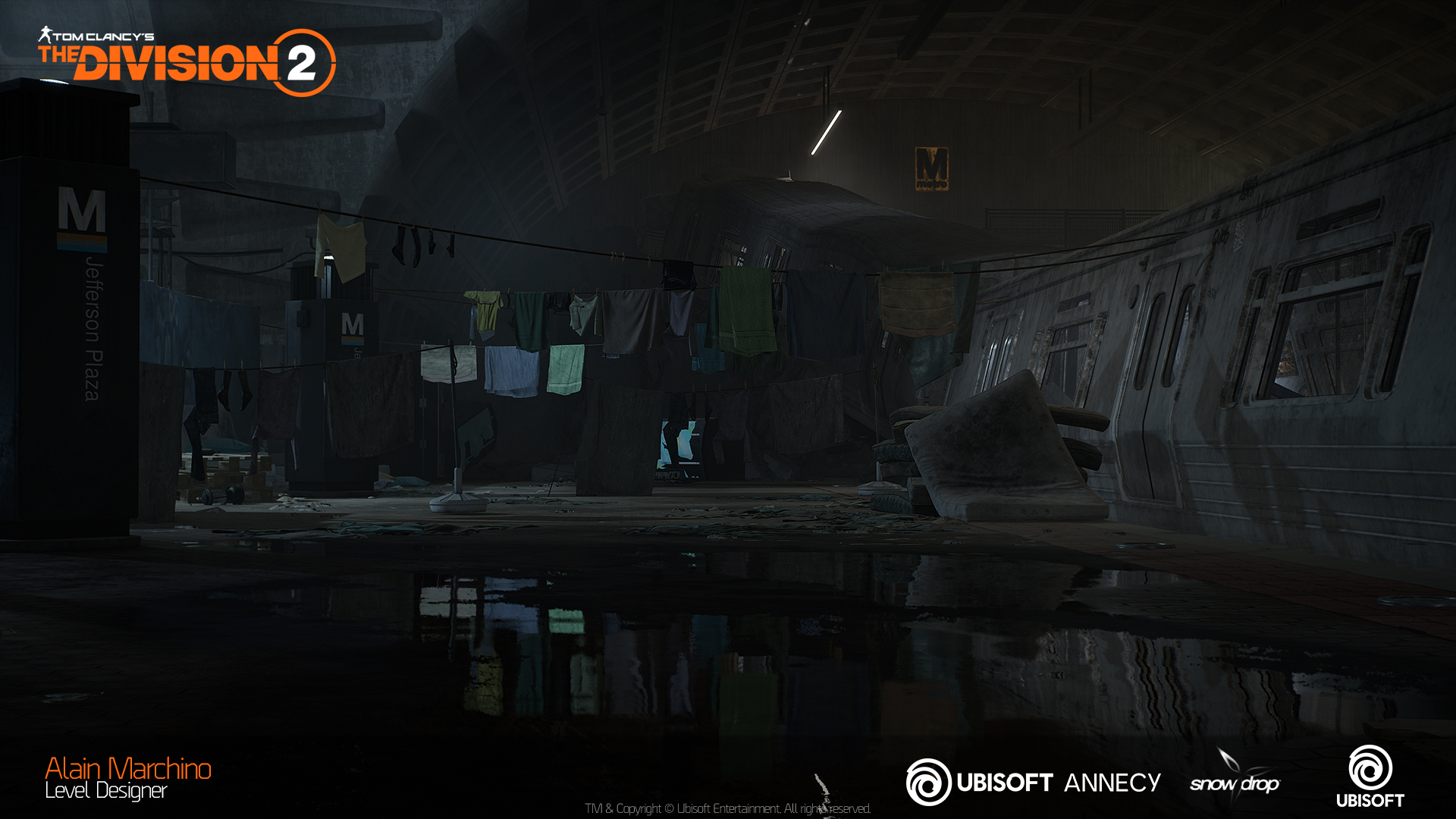
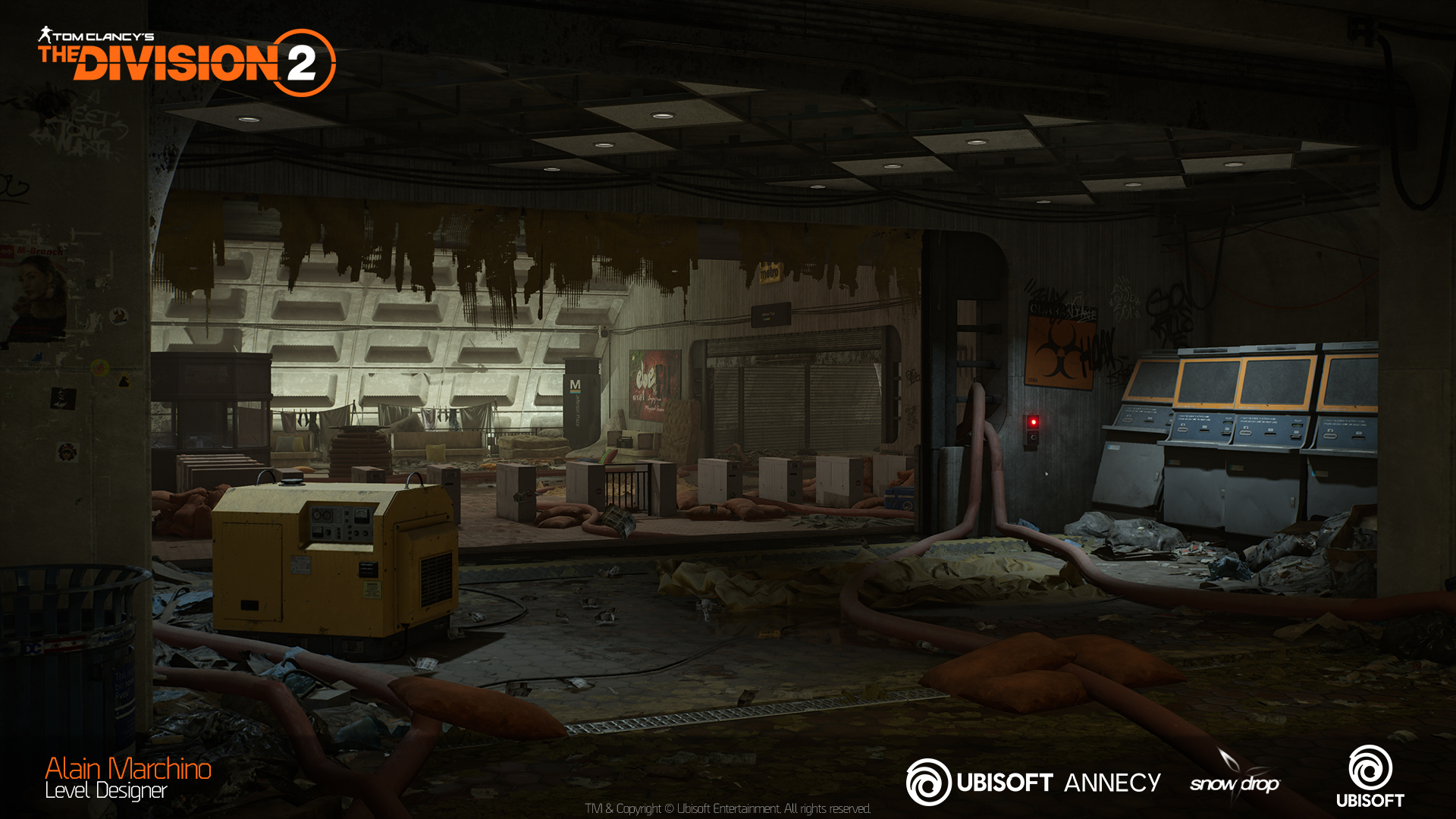
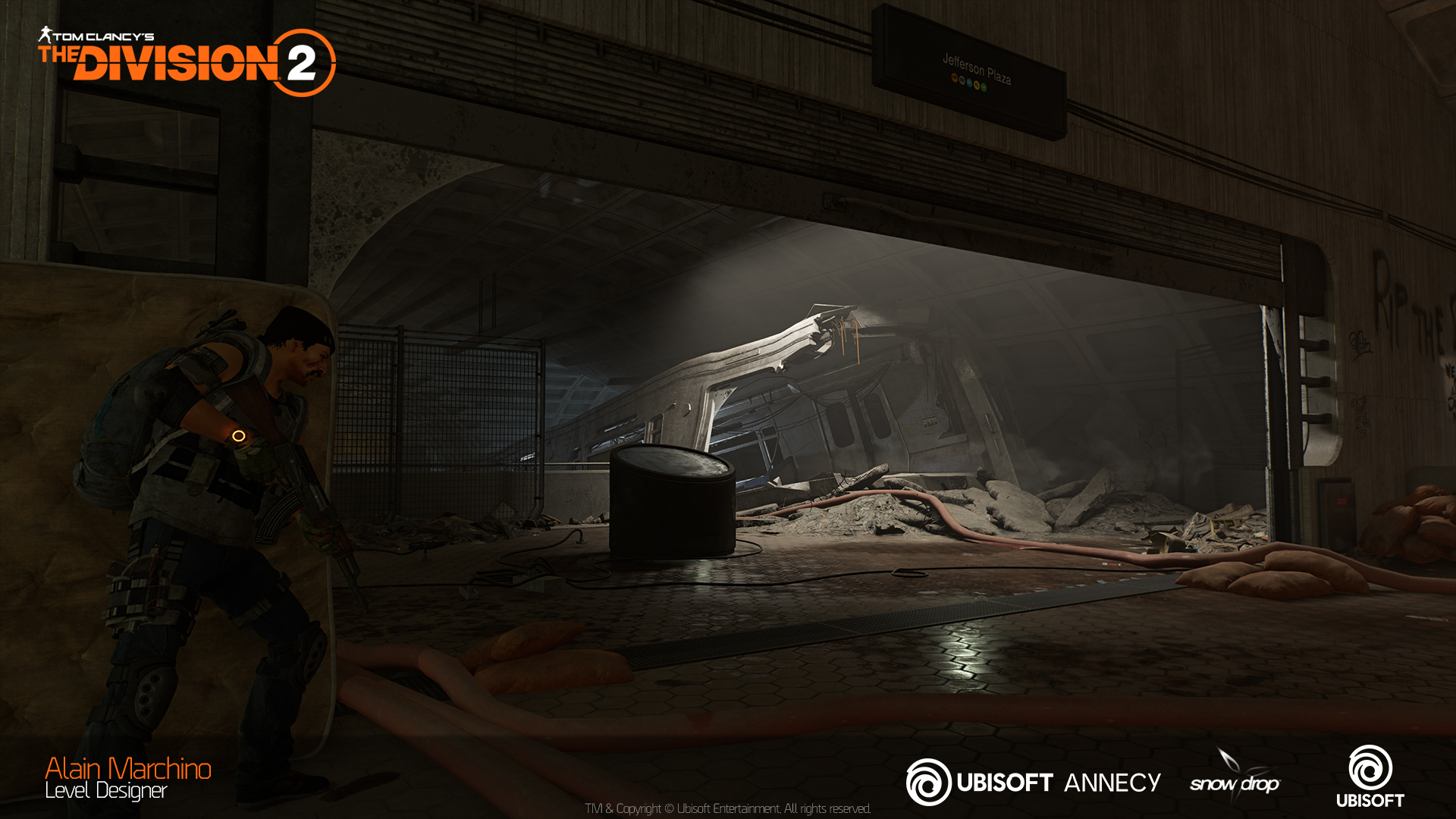

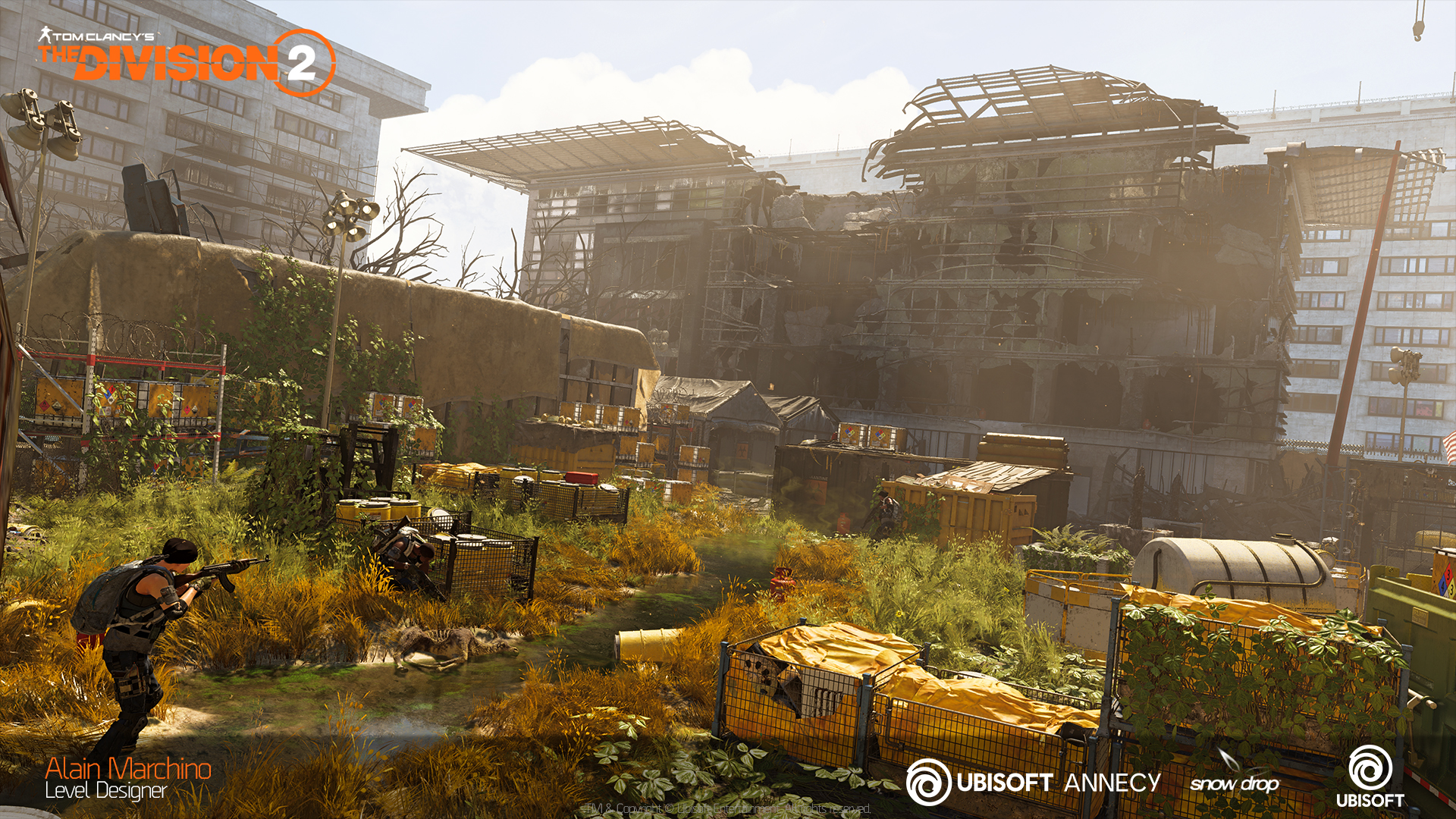
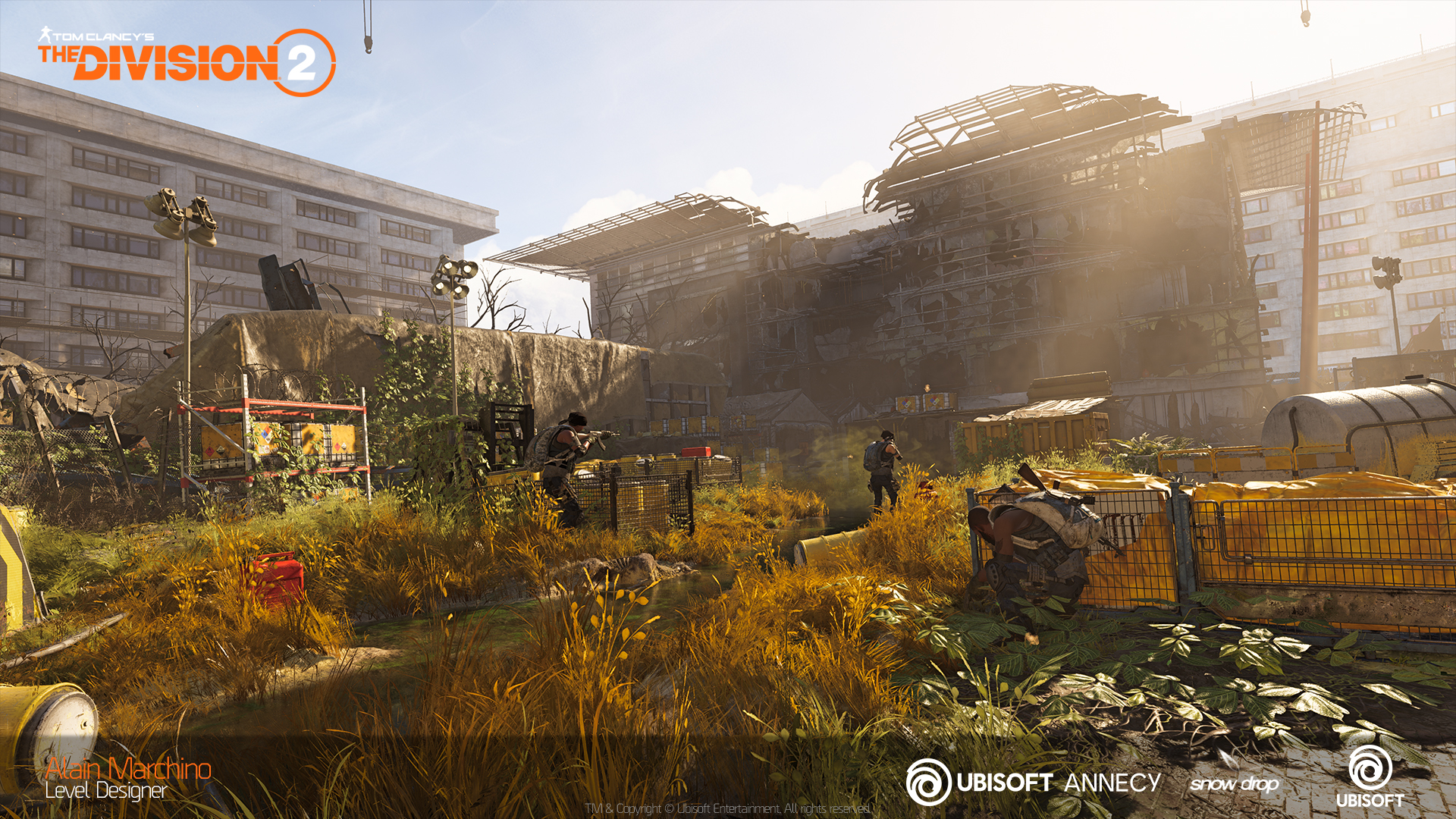
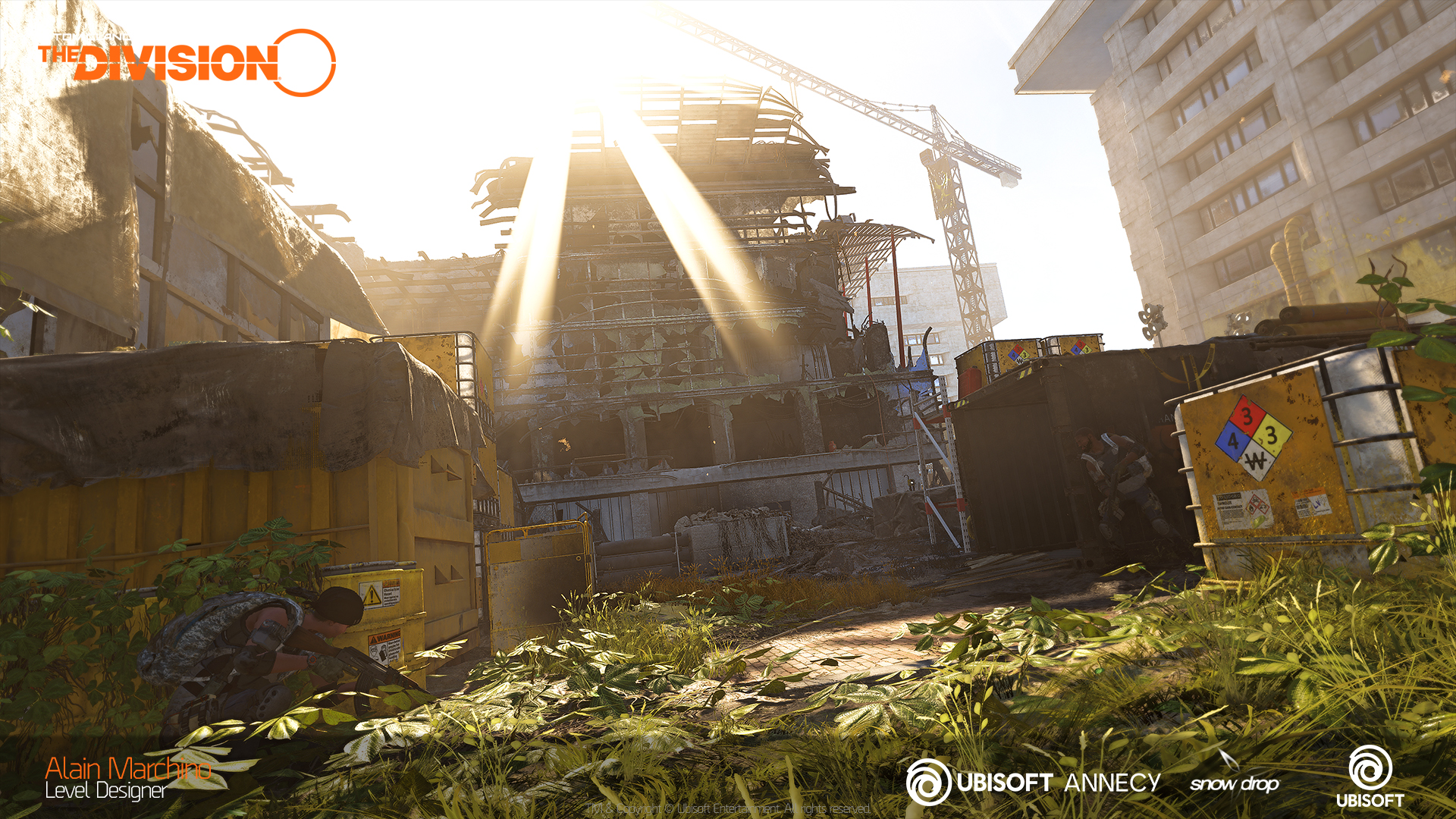

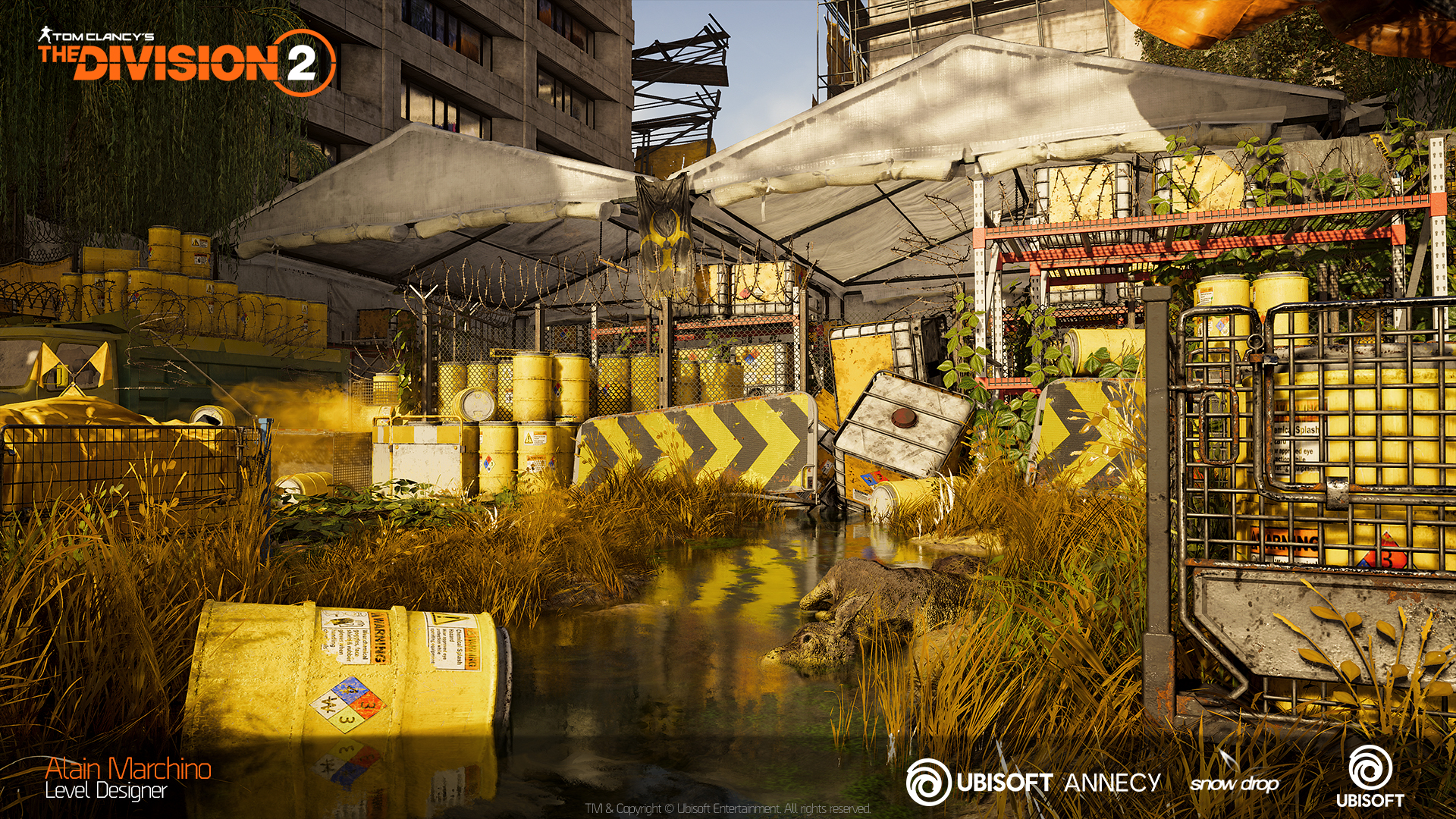
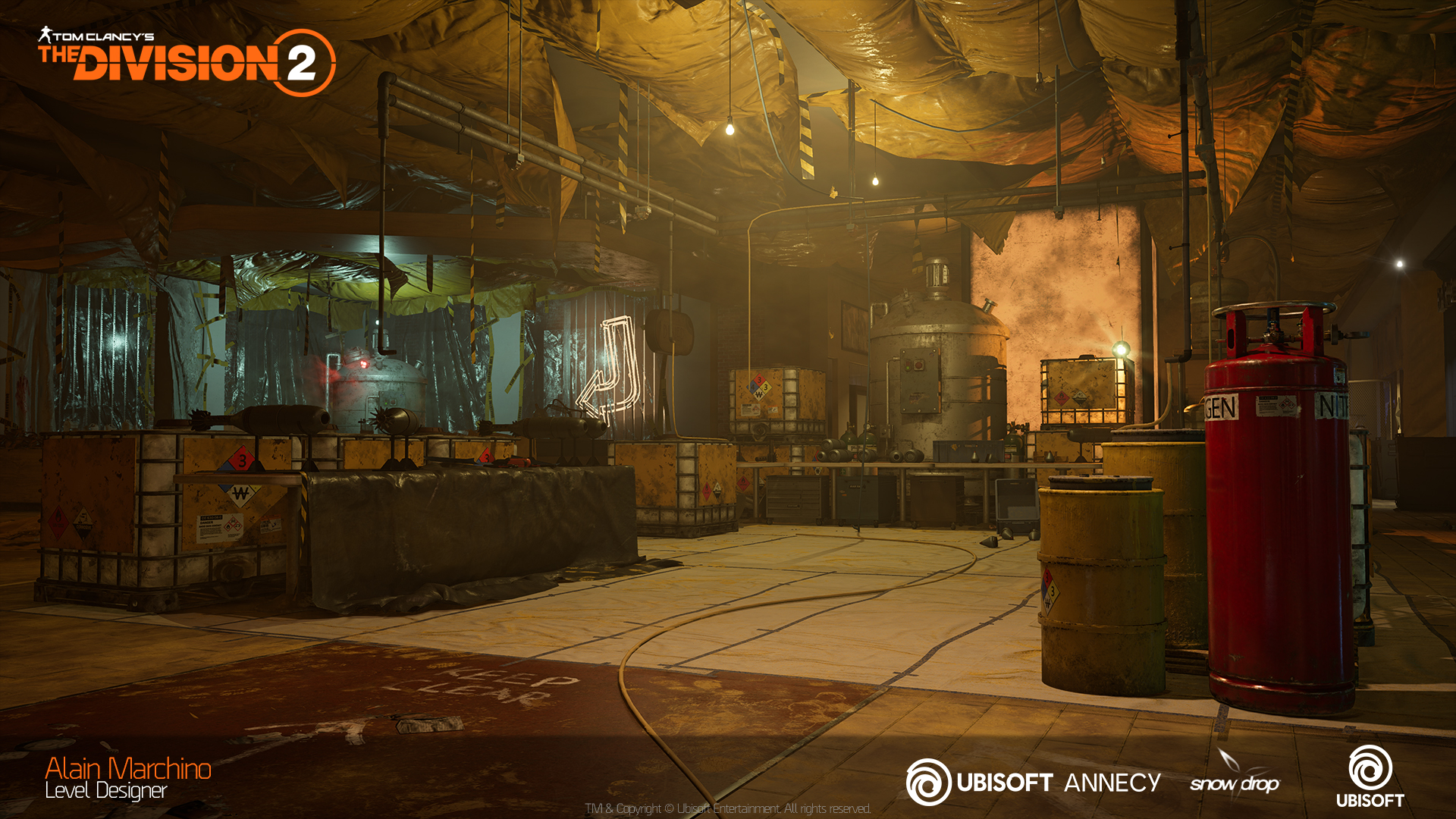
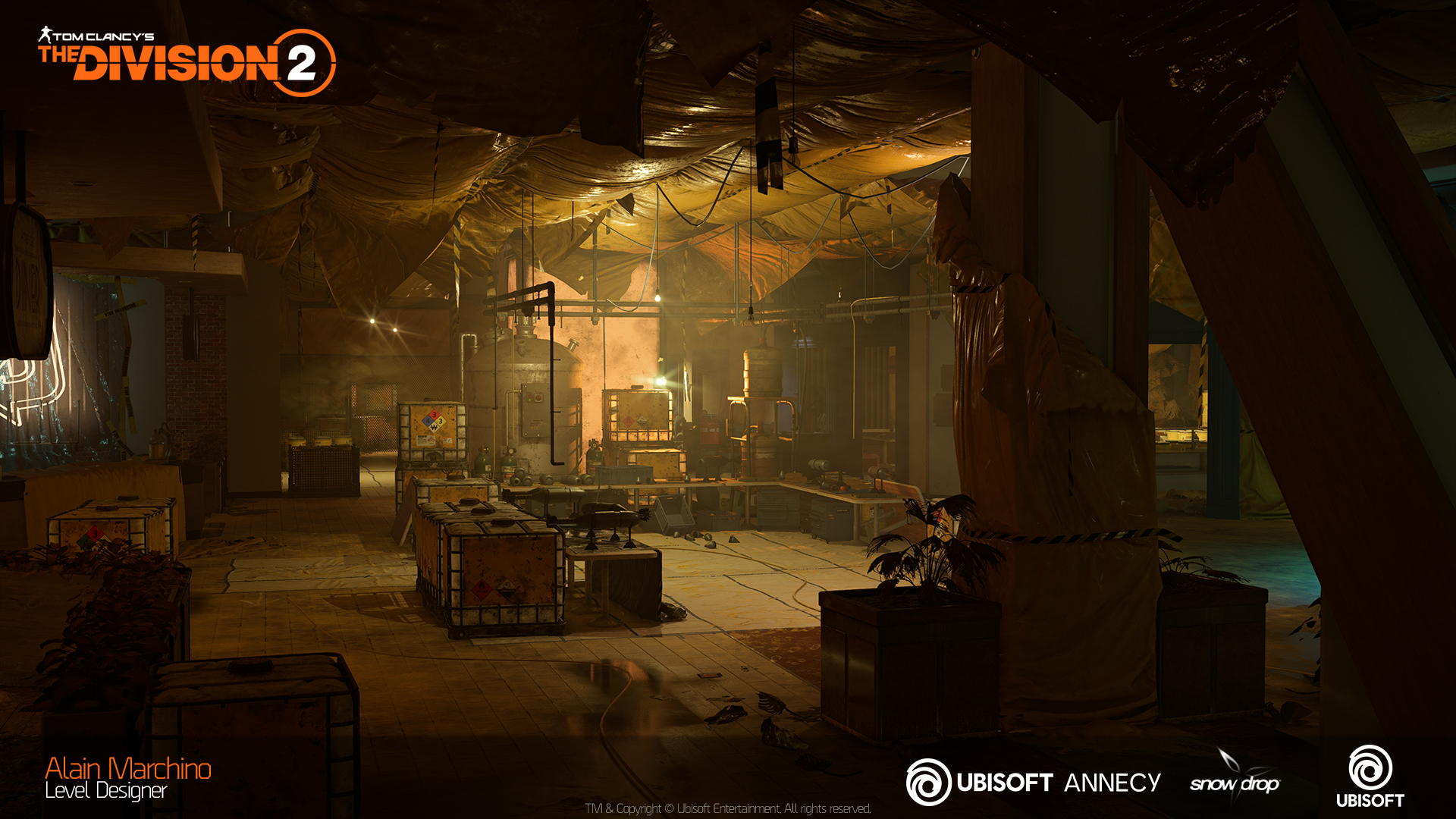
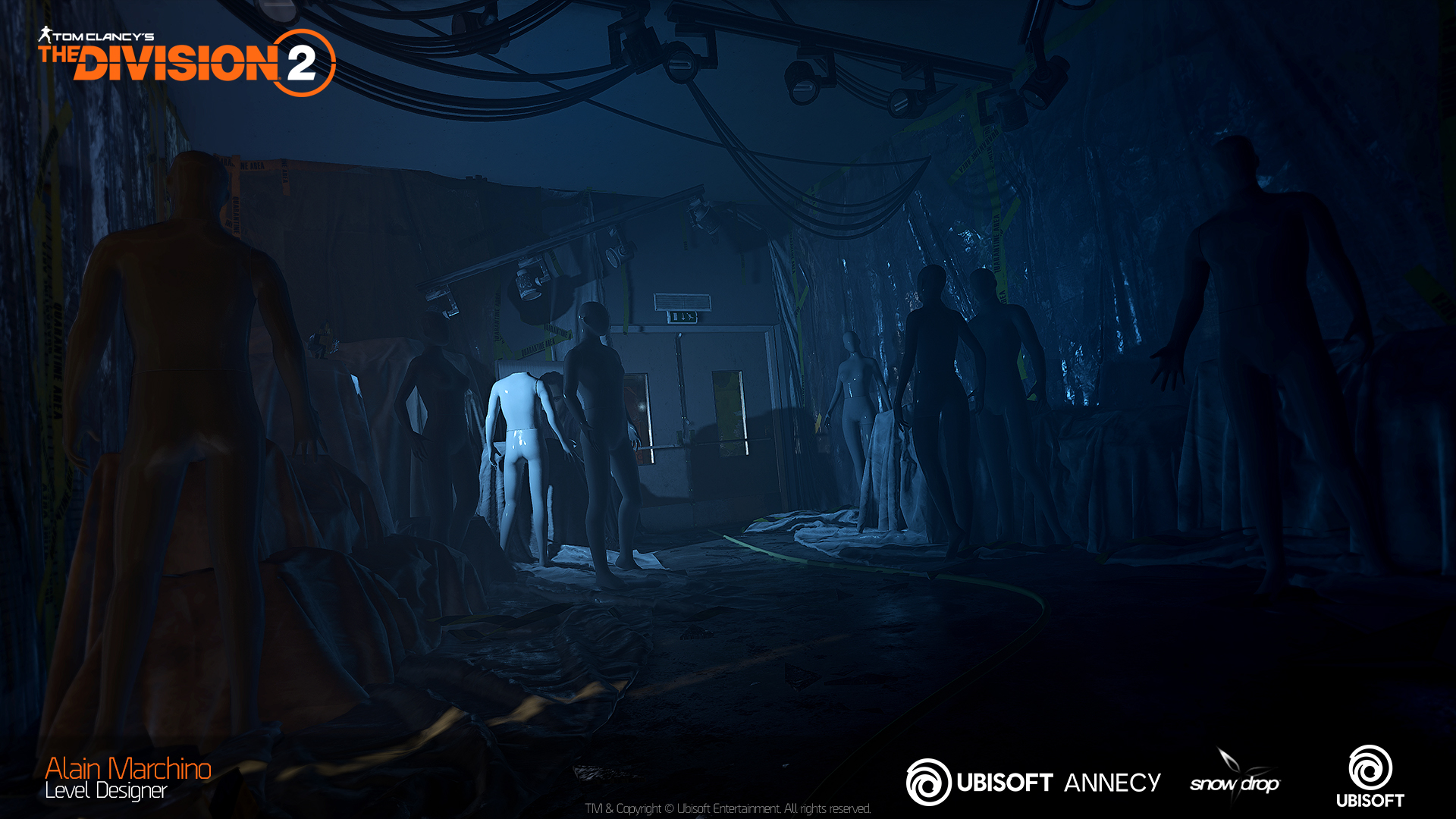

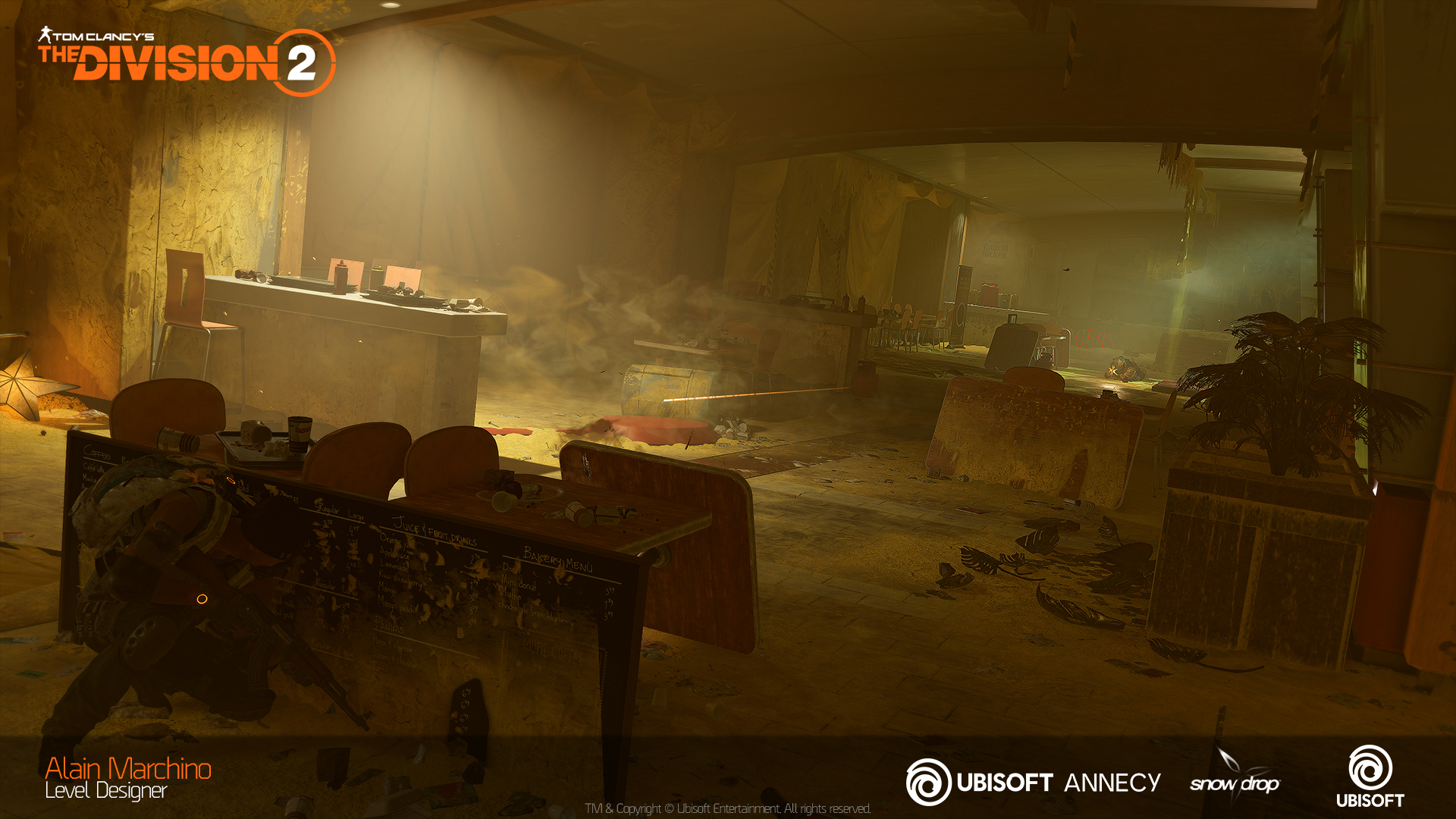
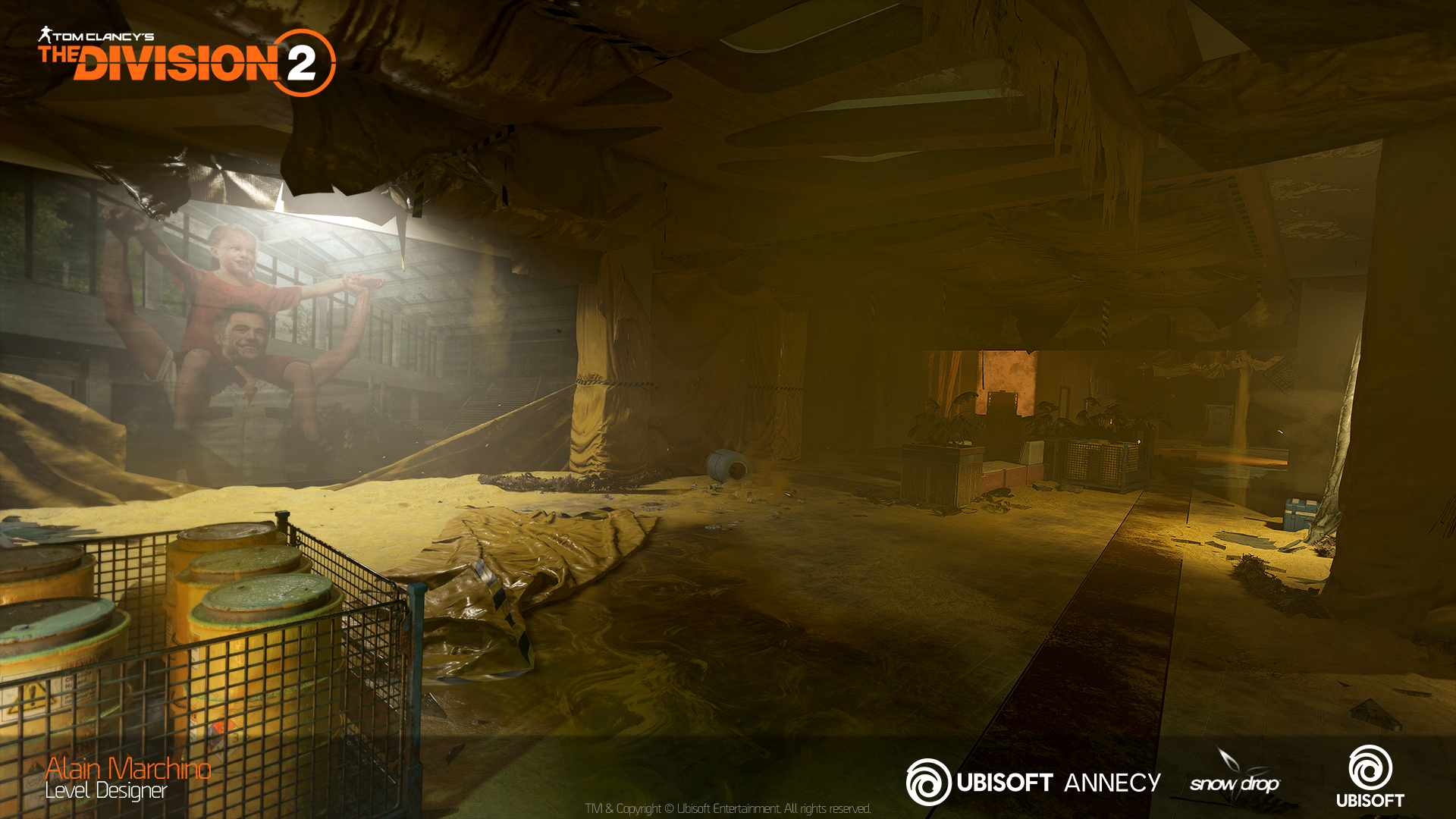
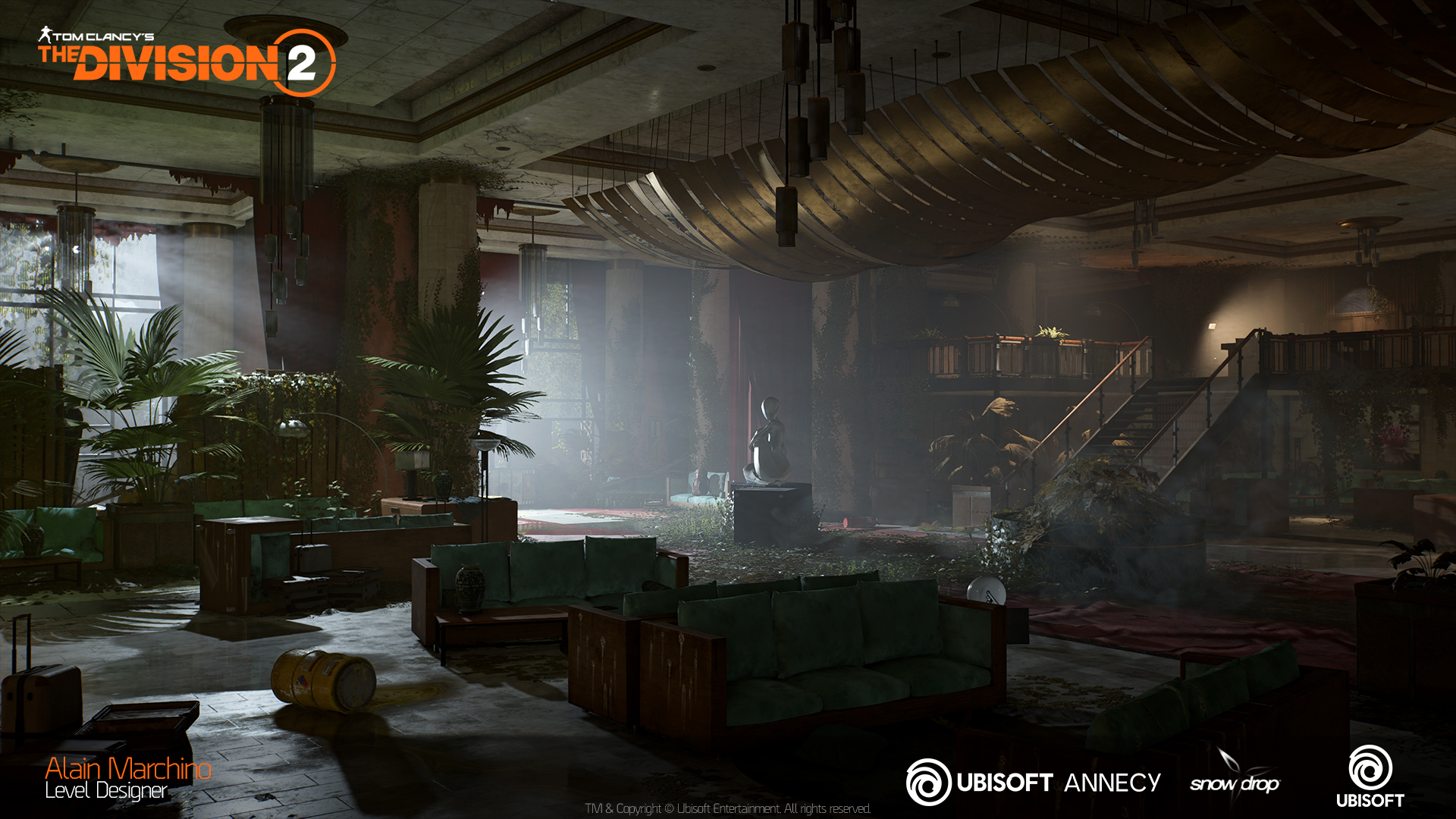
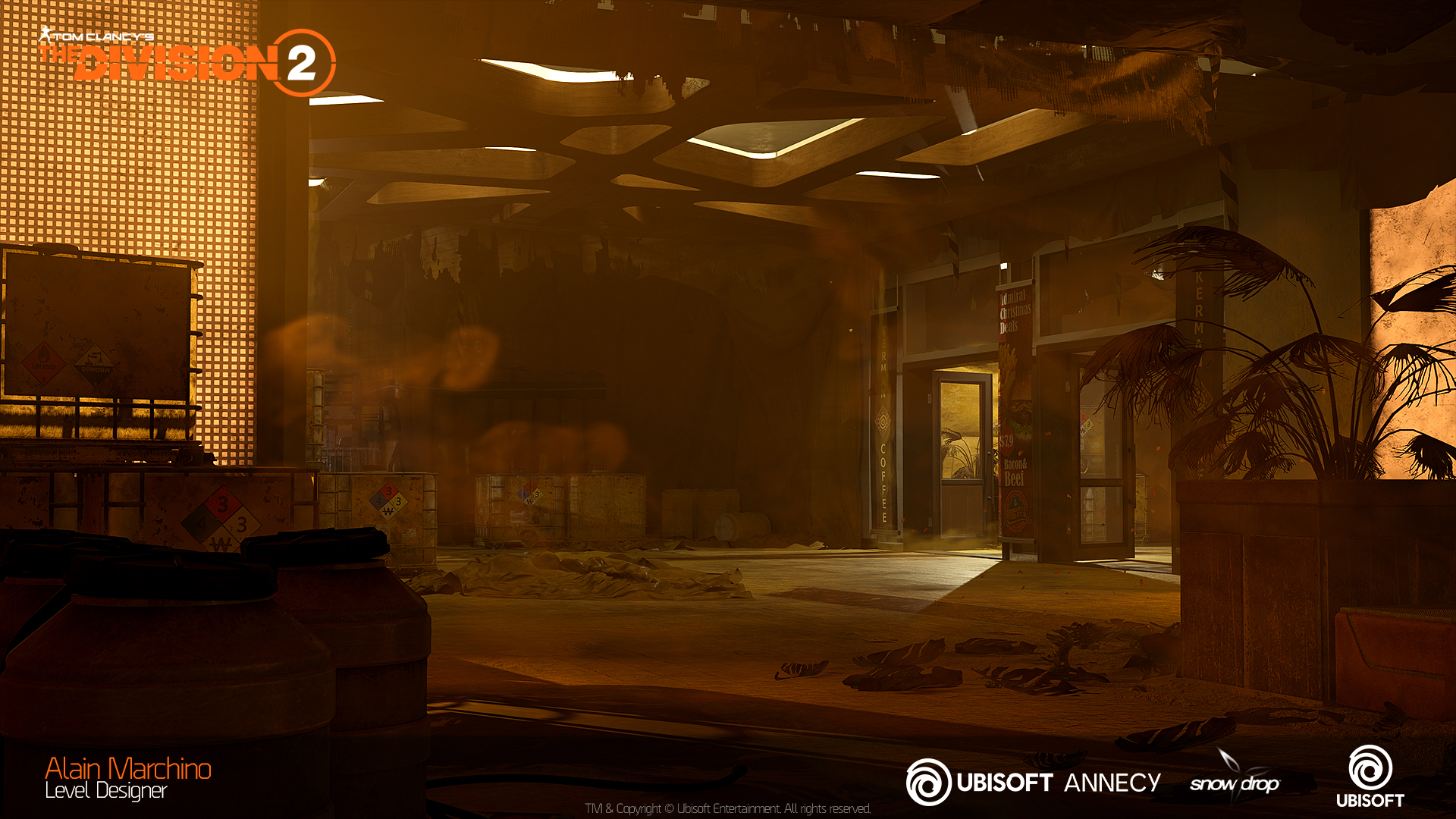


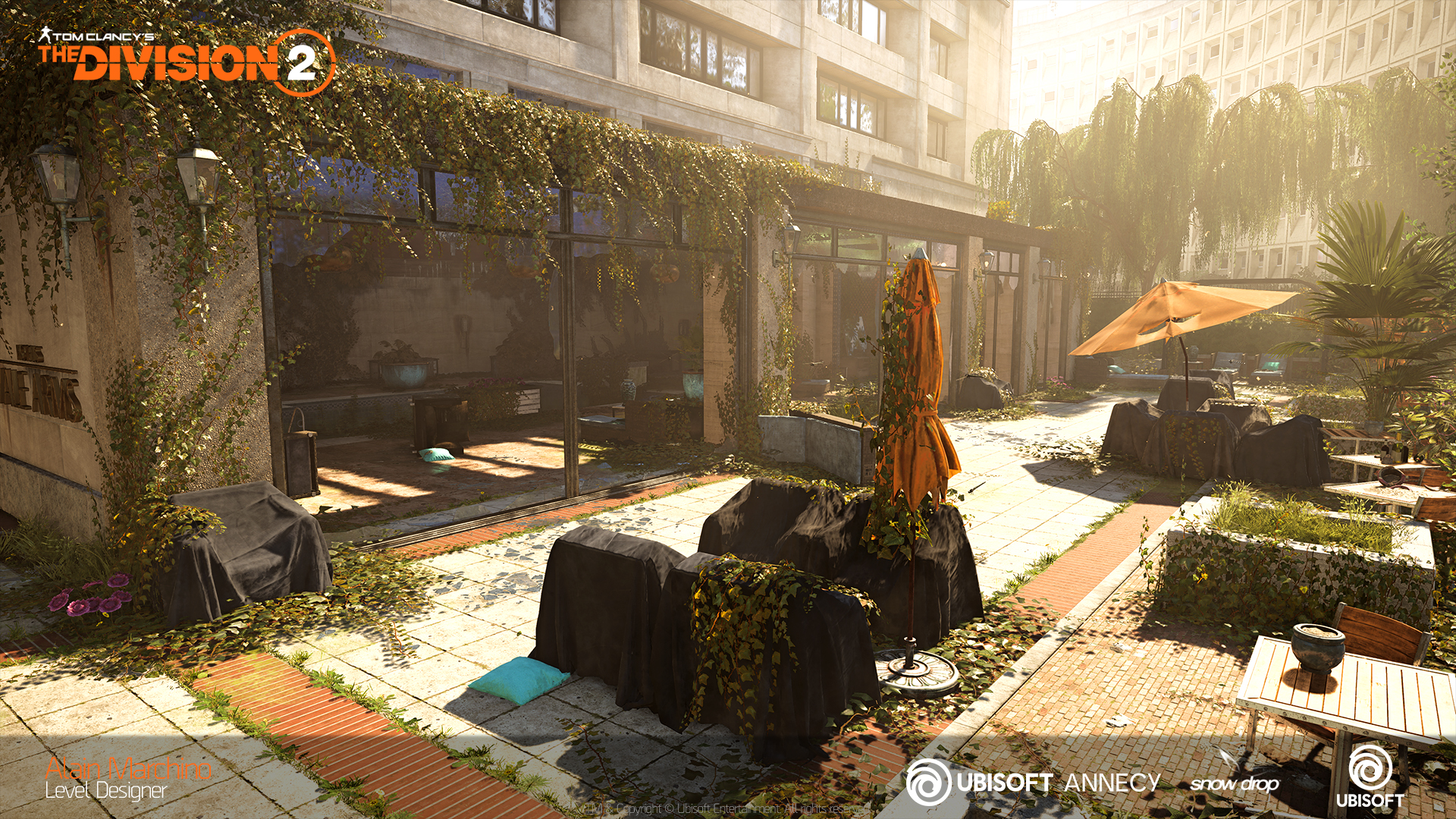
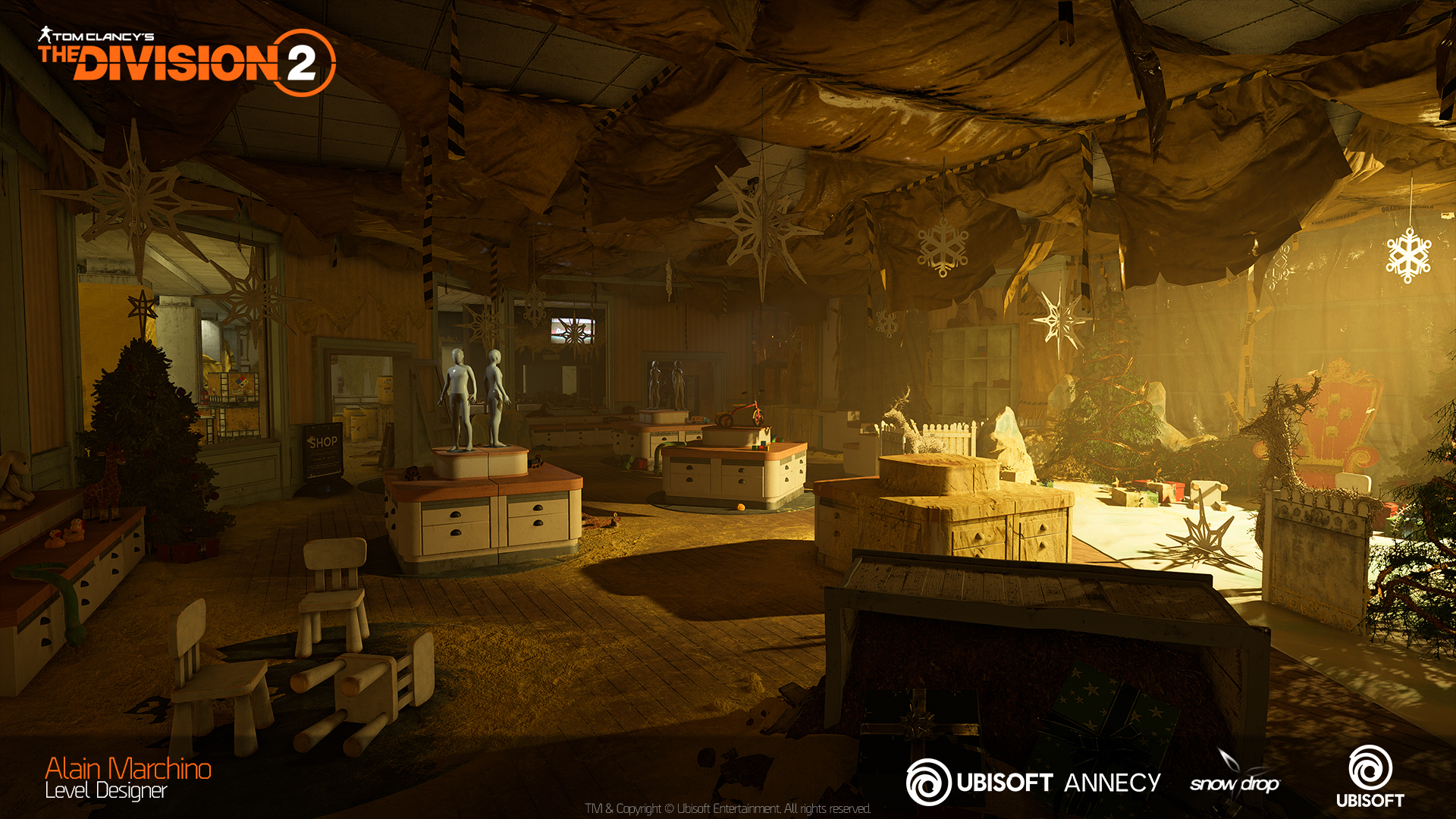

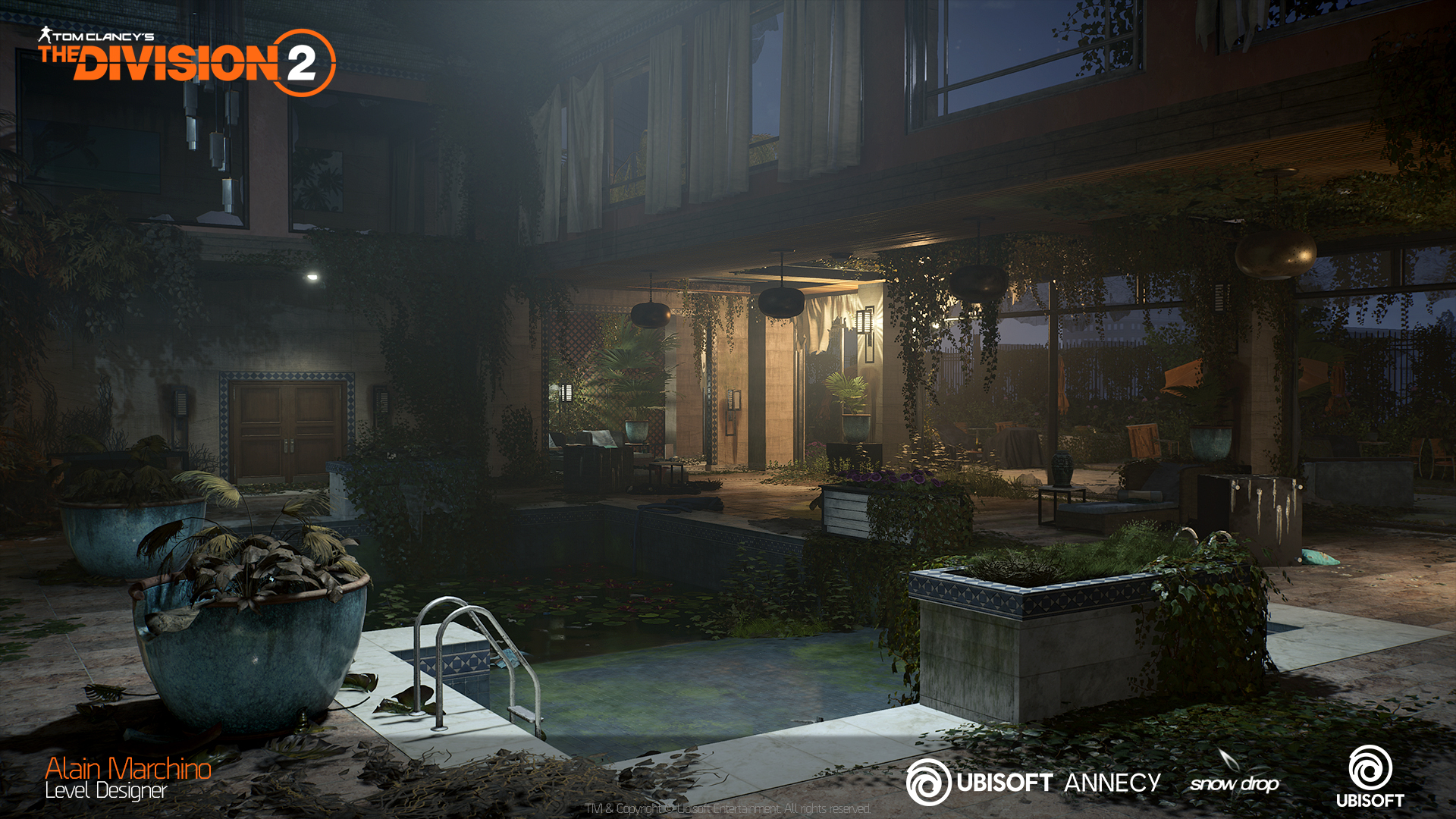
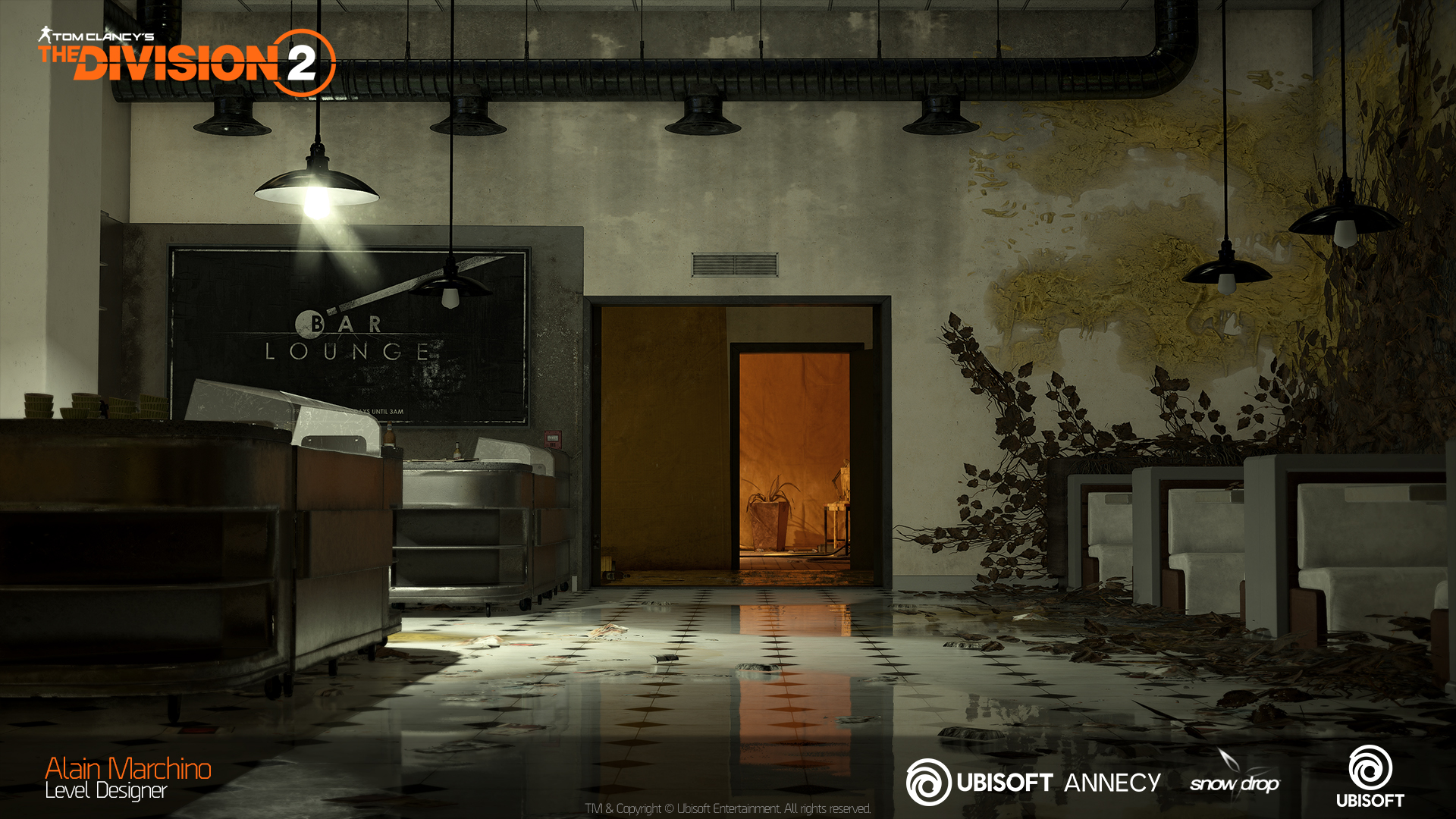
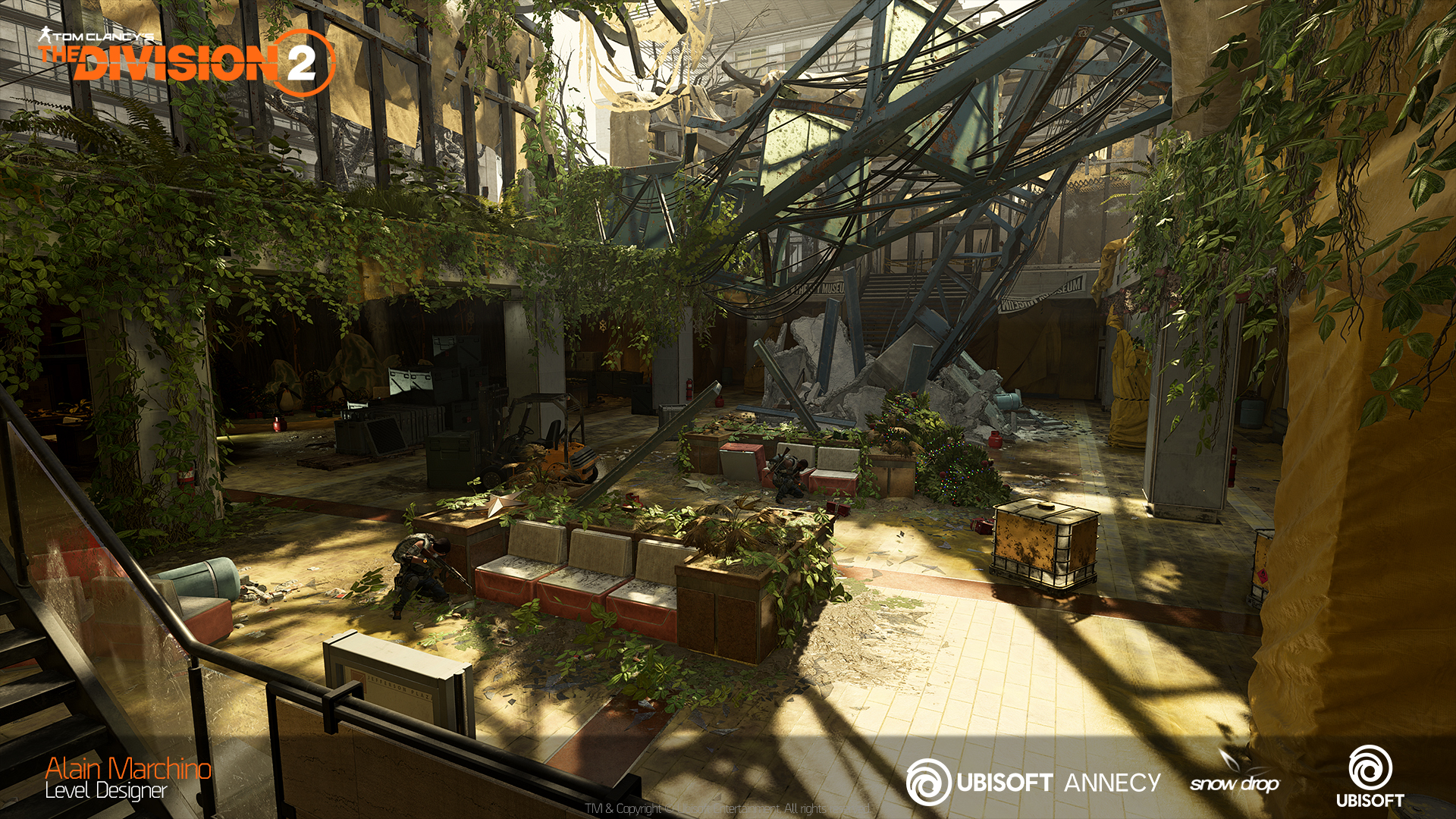


























































Design responsibilities and process
Level Design:
Researched Jefferson Plaza’s real-world architecture to inspire authentic spatial design and mission flow opportunities.
Produced a comprehensive Mission Design Document with 2D maps, beat breakdowns, intensity curves, and boss encounter intentions.
Built and iterated whitebox layouts integrated into the open world, ensuring spatial coherence and adherence to streaming constraints.
Designed combat spaces and traversal routes aligned with Division 2 metrics for cover navigation, AI behavior, and player rhythm.
Delivered both macro- and micro-level layouts supporting varied pacing and progression.
Collaborated with art and design leads to align environmental storytelling with mission objectives and enhance immersion.
Example - Combat layout variation
The hotel lobby encounter expands on the verticality introduced earlier in the mission.
In the spa area, enemies on the second floor were restircted, letting players learn vertical engagement from a safe vantage point.
The lobby then escalates the challenge, enemies can now easily use and traverse both floors, increasing risk and tactical complexity.
The space is shaped for dynamic flanking, cover use, and adaptive movement, pushing players to make quick, strategic decisions under pressure.
Mission Design:
Developed mission flow charts ensuring coherent narrative progression and engaging pacing.
Crafted diverse objectives combining narrative goals with varied combat encounters.
Designed and implemented enemy archetype mixes to promote dynamic tactics and replayability.
Iterated on encounter pacing and difficulty using playtest feedback to maintain balanced challenge.
Scripted mission logic supporting seamless solo and co-op progression across encounter chains.
Conceptualized boss encounters with distinct mechanics and behaviors to deliver memorable finales.
Example - Combat pacing variation
The hotel lobby uses multiple spawn closets positioned to create multi-directional pressure while preserving player visibility on entry. This gives players time to assess threats and plan movement.
Midway through the fight, a new enemy faction armed with foam guns enters as reinforcements, disrupting established rhythms and forcing rapid tactical adaptation.
The sudden shift in enemy behavior and pacing heightens tension within a familiar space, testing player responsiveness under pressure.
Key lesson:
Balanced difficulty and variety within technical limits to sustain engagement.
Integrated narrative and spatial design to create cohesive, immersive mission flow.